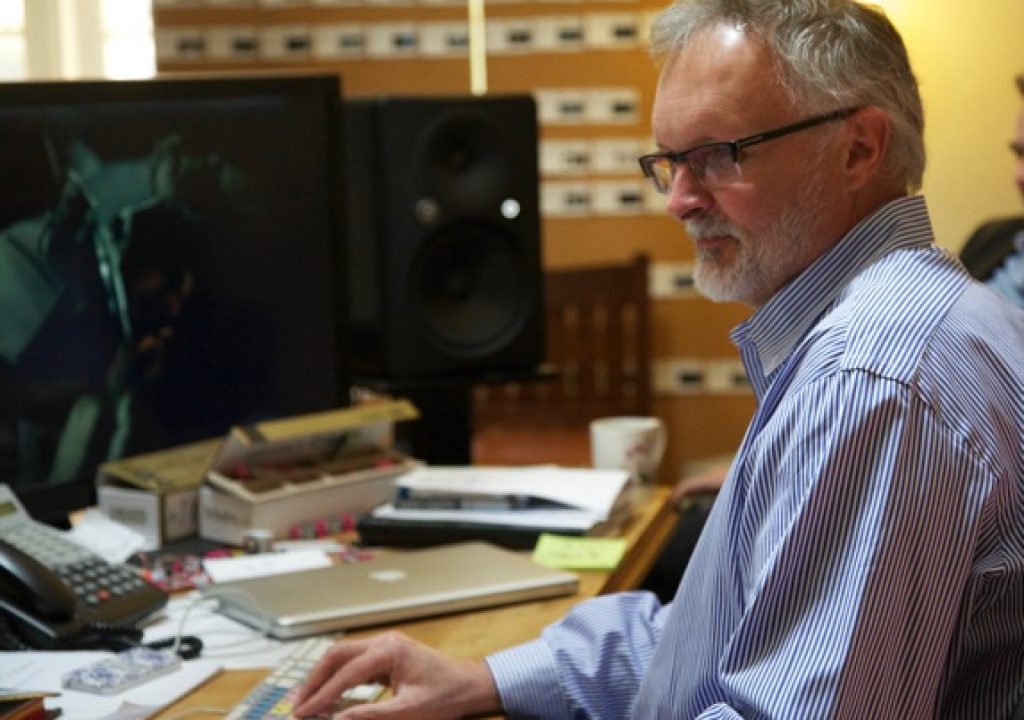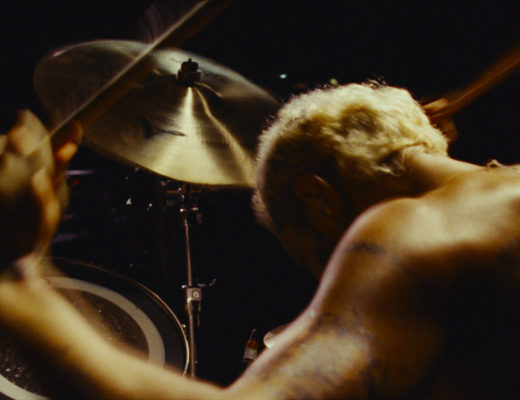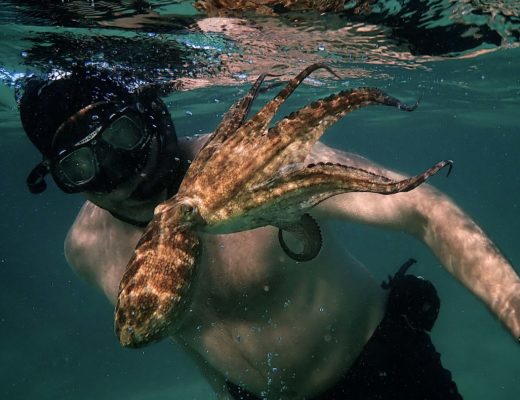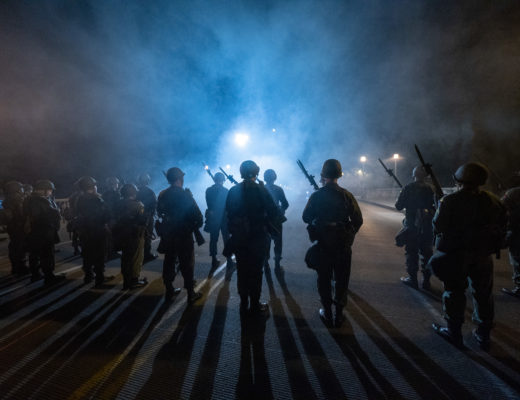Lee Smith, ACE, most recently cut the Bond flick, “Spectre” but has also cut “Master and Commander,” “Batman Begins,” “The Dark Knight,” and “Interstellar” and many others. He also has two Oscar nomination for Best Editing.
 Lee Smith, ACE, has been a feature film editor since 1986. His credits include “The Truman Show,” “Master and Commander,” “Batman Begins,” “The Prestige,” “The Dark Knight,” “Inception,” “X-men: First Class,” “The Dark Knight Rises,” “Interstellar” and, most recently, Sam Mendes’ contribution to the James Bond franchise: “Spectre.” Accolades include two Oscar nominations and two Eddie nominations for Best editing.
Lee Smith, ACE, has been a feature film editor since 1986. His credits include “The Truman Show,” “Master and Commander,” “Batman Begins,” “The Prestige,” “The Dark Knight,” “Inception,” “X-men: First Class,” “The Dark Knight Rises,” “Interstellar” and, most recently, Sam Mendes’ contribution to the James Bond franchise: “Spectre.” Accolades include two Oscar nominations and two Eddie nominations for Best editing.
HULLFISH: There are a number of fight scenes in “Spectre.” What are some of your words of wisdom for approaching a fight scene?
spectre-Spectre_EPK_DOM_Clip_PalazzoExit_h264_hd from Steve Hullfish on Vimeo.
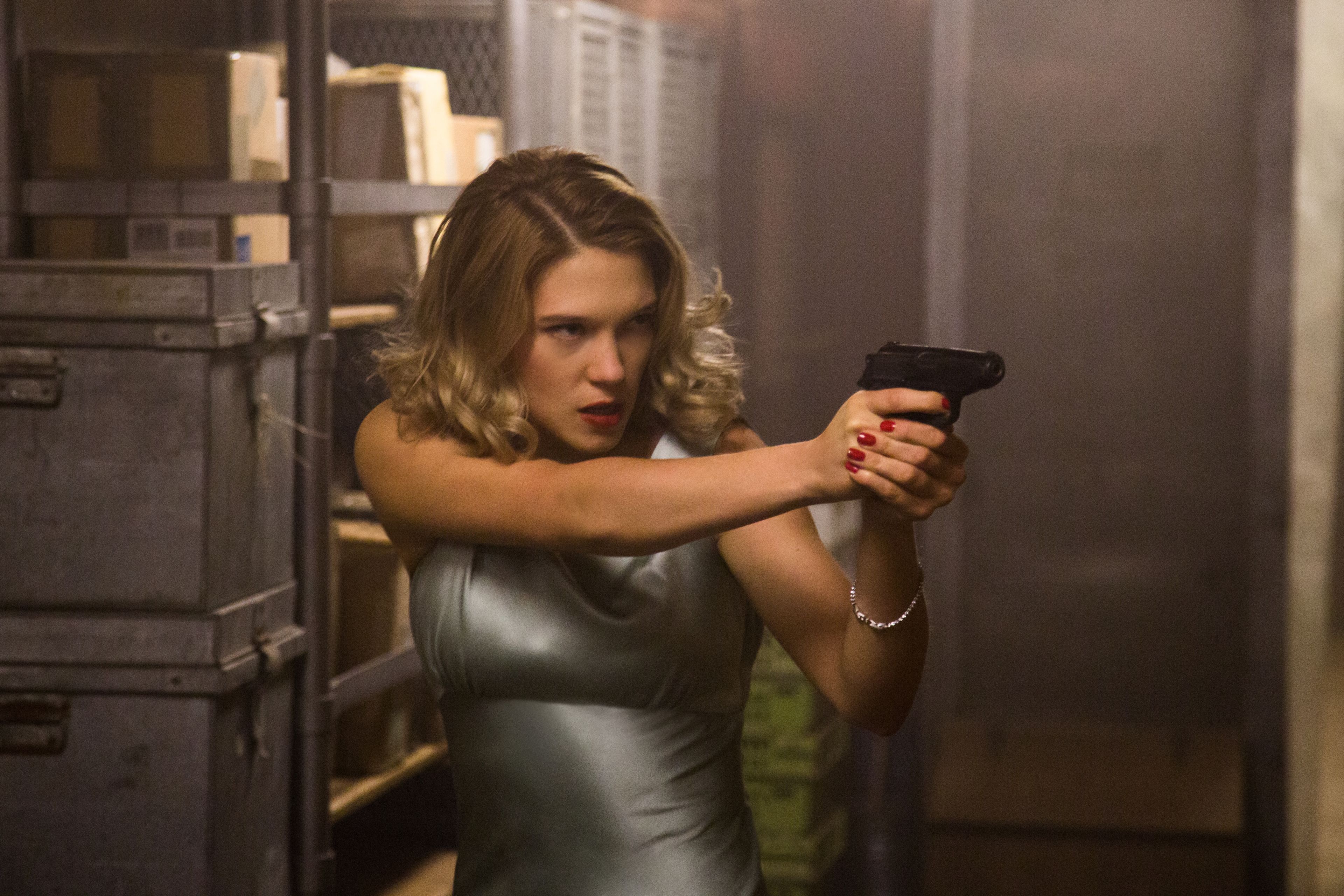
SMITH: Fight scenes kind of live and die on the quality of the fight coordinators and the ability of the actors to perform most of the fights themselves. If the stuntman or stuntwoman is heavily featured it can be a little bit tricky in terms of angle choice as the stunt performer has to be hidden from the audience, CGI has been used of late for head replacement, which is very useful but the physical movement of stunt person versus actor is quite often the giveaway making it difficult for the editor to hold onto a shot for any length of time. You have to follow who you’re with and make it as clear to the audience as possible at every given moment what’s going on. Some fight sequences end up getting cut to the point where you have no understanding of who’s fighting who or they might be lit in such a way that it’s difficult to figure out who’s fighting who and you have to slow the cut down just a little bit to make sure you’re with the main character. The fight has to have a narrative reason to be there rather than just people fighting. If there’s a cause and effect, you can follow it. If it’s just random explosions and people flying through the air and getting shot at, it gets boring very quickly. Indeed, fight sequences get boring very quickly if they’re not moving the story along. Just the visual excitement of it in some films is very tiring when the fight sequences just seem to go on too long.
HULLFISH: Do you find in those fight sequences if you have some kind of musical pacing: fast sections and pauses and changes in dynamics?
SMITH: Can be. You go into high speed photography (slow motion ) just to clarify a story point. Can be fun and very stylish. Or you can go for the visceral, realistic fight. You have to have the stakes sorted out. You have to have some reason for that action sequence to take place. Who’s stopping who and why are they stopping them and stay within some realms of plausible logic.
HULLFISH: I’m thinking about the sequence on the train between Bond and the giant guy. You mentioned the difficulties of editing when stunt people are involved. Bond flies through some walls and stuff like that, so I’m assuming a stunt person did at least some of that work.
spectre-Spectre_EPK_DOM_Clip_TrainFight_h264_hd from Steve Hullfish on Vimeo.
SMITH: That’s an interesting sequence. A lot of that, Daniel did himself and so did his nemesis, Mr. Hinx. That was a very physical sequence and Daniel actually got hurt and so did Hinx. They’re big, fit, tough guys and they weren’t pulling a lot of what they were doing. They are play fighting, but I stood next to both of them on occasion and you would not want to get hit by either one of them. The stunt guys were really only peppered throughout that scene in a very small fashion. The coverage was very weighted to the actors and that’s one of the reasons I think that sequence is so enjoyable to watch, because the percentage of stunt work is very small. You’re right that when you Bond got thrown through a wall backwards that the odds are it’s a stunt person and it was. But a lot of the time it was the actors who were ducking or taking punches. It was the real characters. It was all about how it was shot, where you cut, sometimes with the right angle you really can make it look like a punch connects. And in fact, in some instances, the punches DID connect. (laughs)
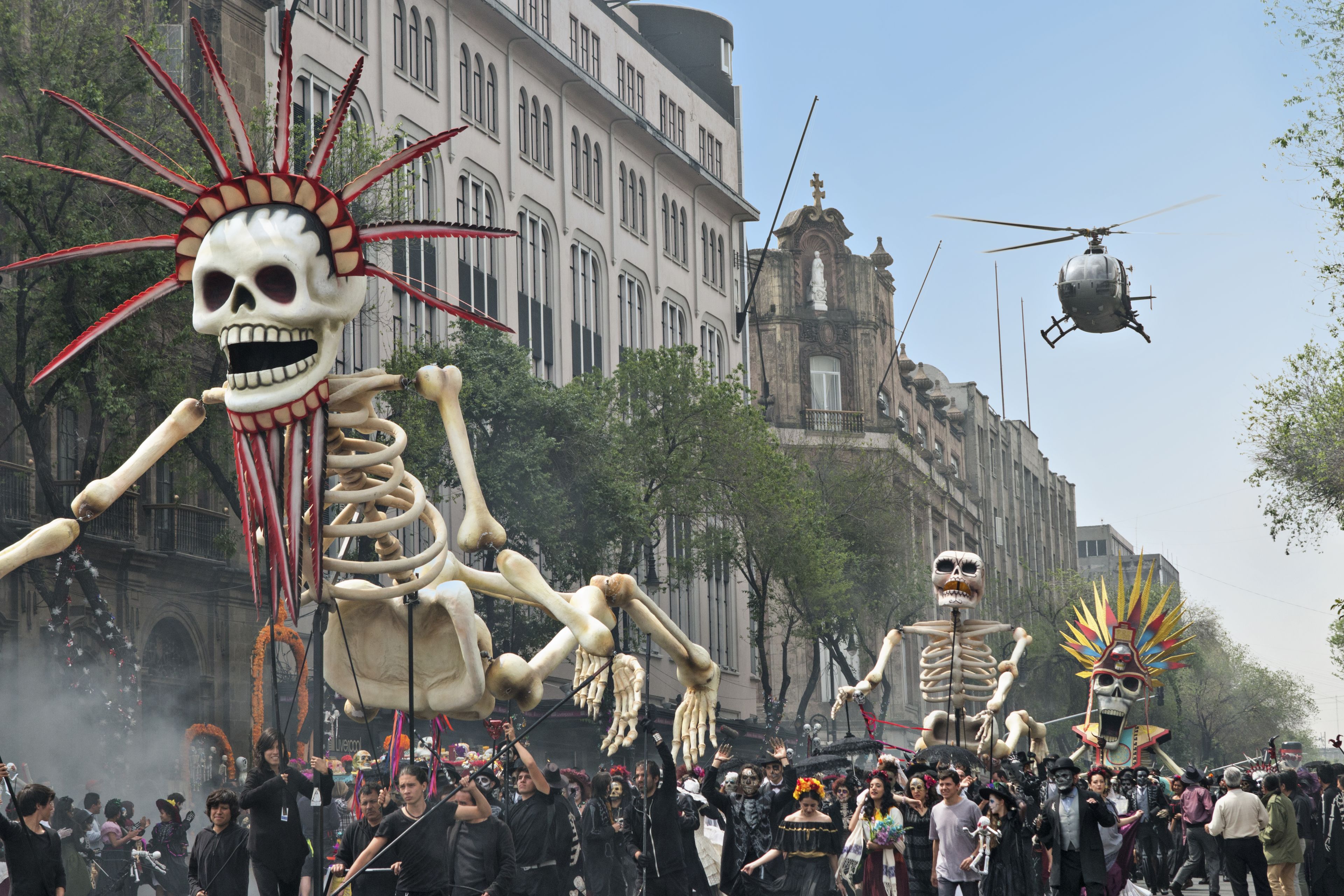 HULLFISH: Talk to me about the beginning of the movie. There’re two big set-piece Steadicam/crane shots that go on for several minutes. First as Bond walks through the Day of the Dead celebration into a hotel, up an elevator and into a bedroom, then from the bedroom out along a rooftop. Was there any coverage shot of that, or was it “go big or go home” in making it look like it was all one or two shots?
HULLFISH: Talk to me about the beginning of the movie. There’re two big set-piece Steadicam/crane shots that go on for several minutes. First as Bond walks through the Day of the Dead celebration into a hotel, up an elevator and into a bedroom, then from the bedroom out along a rooftop. Was there any coverage shot of that, or was it “go big or go home” in making it look like it was all one or two shots?
SMITH: That was all four single-camera set-ups that were all joined in the editing room and with the aid of digital technology, made seamless. Indeed it was just one camera. There were no choices in angles; just takes of the same camera set ups. That was how it had to be. We picked up the interior of the hotel in an edit, then Bond rides up in the lift and we pick up going in to the room in an edit, then after the Estrella’s dialogue on the bed we pick up an edit when the camera swings around and another edit as he steps out of the room onto the window ledge and along the rooftops. But for most people in the audience, it looks like a single shot. And indeed, a lot of my colleagues thought it was one take.
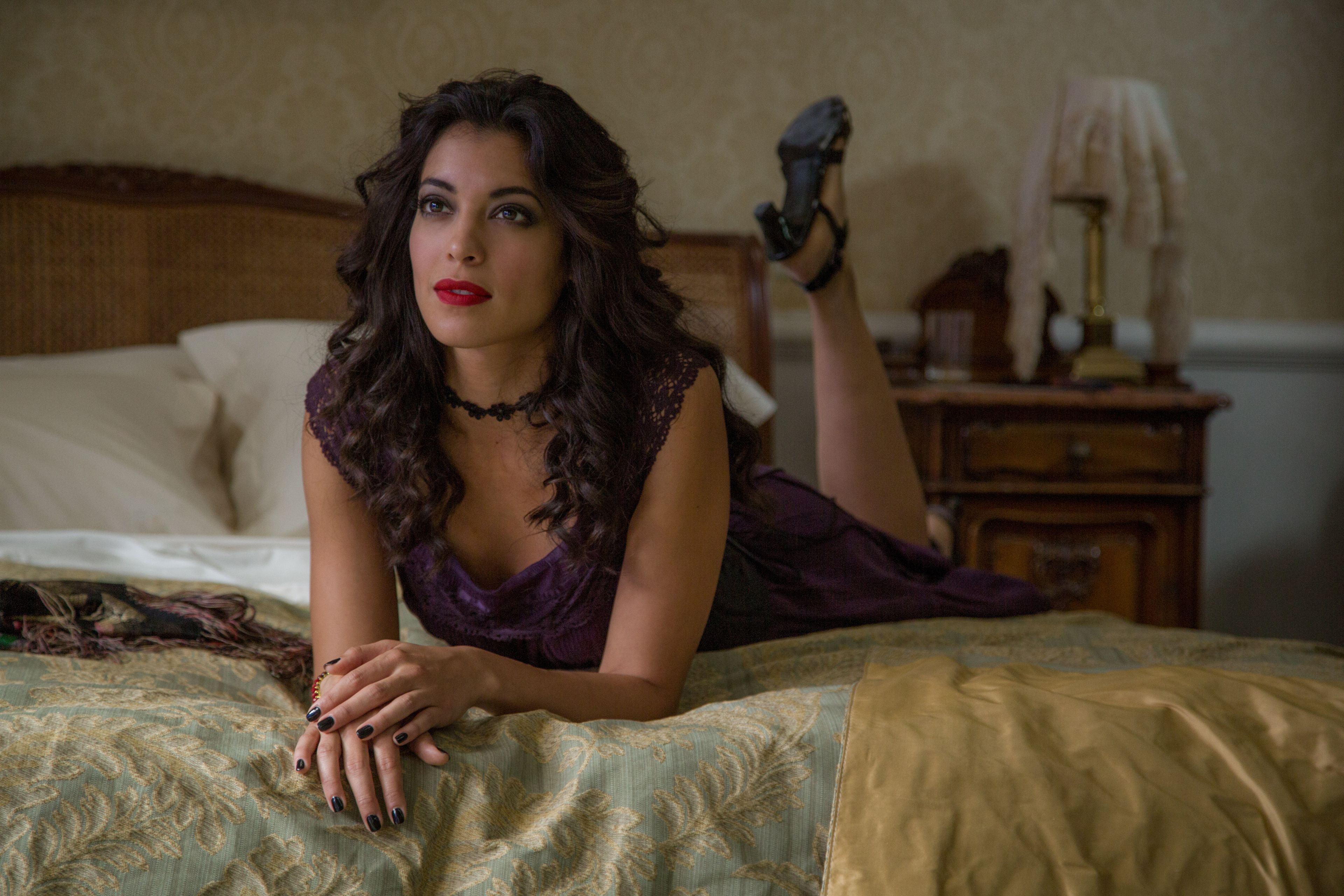 HULLFISH: I figured it was two.
HULLFISH: I figured it was two.
SMITH: Well, if you’ve got an editorial mind, and you clearly do, you can say, “I find it difficult to believe that you could have done that.” Sam Mendes wanted that sequence to work like that and it was very carefully orchestrated and very difficult to pull off. There were anomalies within those takes that had to be dealt with. We did little speed ramps to get things to go a bit quicker. There are probably 100 things that have been applied to that sequence aside from the edit points.
HULLFISH: What’s your approach to cutting a basic scene?
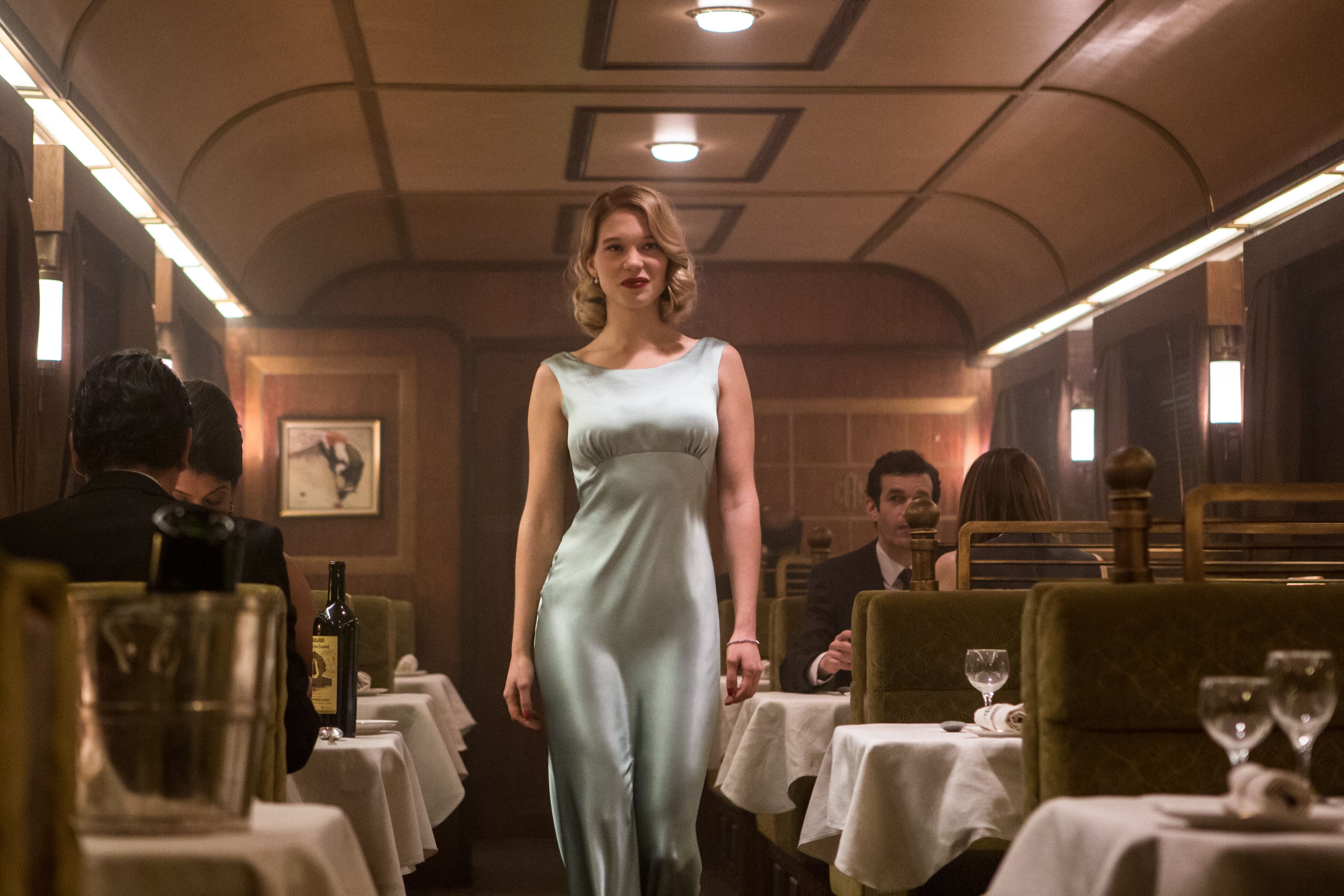 SMITH: In the normal convention of how I work, I’m on project before the shoot starts for about a week, maybe running tests or looking at footage that principle photography won’t be shooting (stock footage etc). But before I begin to edit a scene in the cutting room, I would have viewed it in dailies the night before with the director. I use that time to not only watch the footage but talk about what’s coming and what’s happened and any editorial problems or concerns with coverage. Sometimes you don’t get that luxury and everybody goes off and watches dailies on their PIX system or whatever and I miss out on that opportunity to discuss the shoot which I still believe is vital part of the process. The next morning I come in and open it up and just start cutting. It’s an interesting thing: editing. I’d normally start with the master shot and look at it and remember what I liked about it. I don’t really take notes. I have a good memory of what I like and what I don’t like. Then I very quickly put the scene together and then refine it. In the case of “Spectre” we would “PIX” the cut sequence every day. (i.e., Upload the edits to the PIX delivery system so the director and others can view the finished cut.)
SMITH: In the normal convention of how I work, I’m on project before the shoot starts for about a week, maybe running tests or looking at footage that principle photography won’t be shooting (stock footage etc). But before I begin to edit a scene in the cutting room, I would have viewed it in dailies the night before with the director. I use that time to not only watch the footage but talk about what’s coming and what’s happened and any editorial problems or concerns with coverage. Sometimes you don’t get that luxury and everybody goes off and watches dailies on their PIX system or whatever and I miss out on that opportunity to discuss the shoot which I still believe is vital part of the process. The next morning I come in and open it up and just start cutting. It’s an interesting thing: editing. I’d normally start with the master shot and look at it and remember what I liked about it. I don’t really take notes. I have a good memory of what I like and what I don’t like. Then I very quickly put the scene together and then refine it. In the case of “Spectre” we would “PIX” the cut sequence every day. (i.e., Upload the edits to the PIX delivery system so the director and others can view the finished cut.)
HULLFISH: I did the same on my last feature.
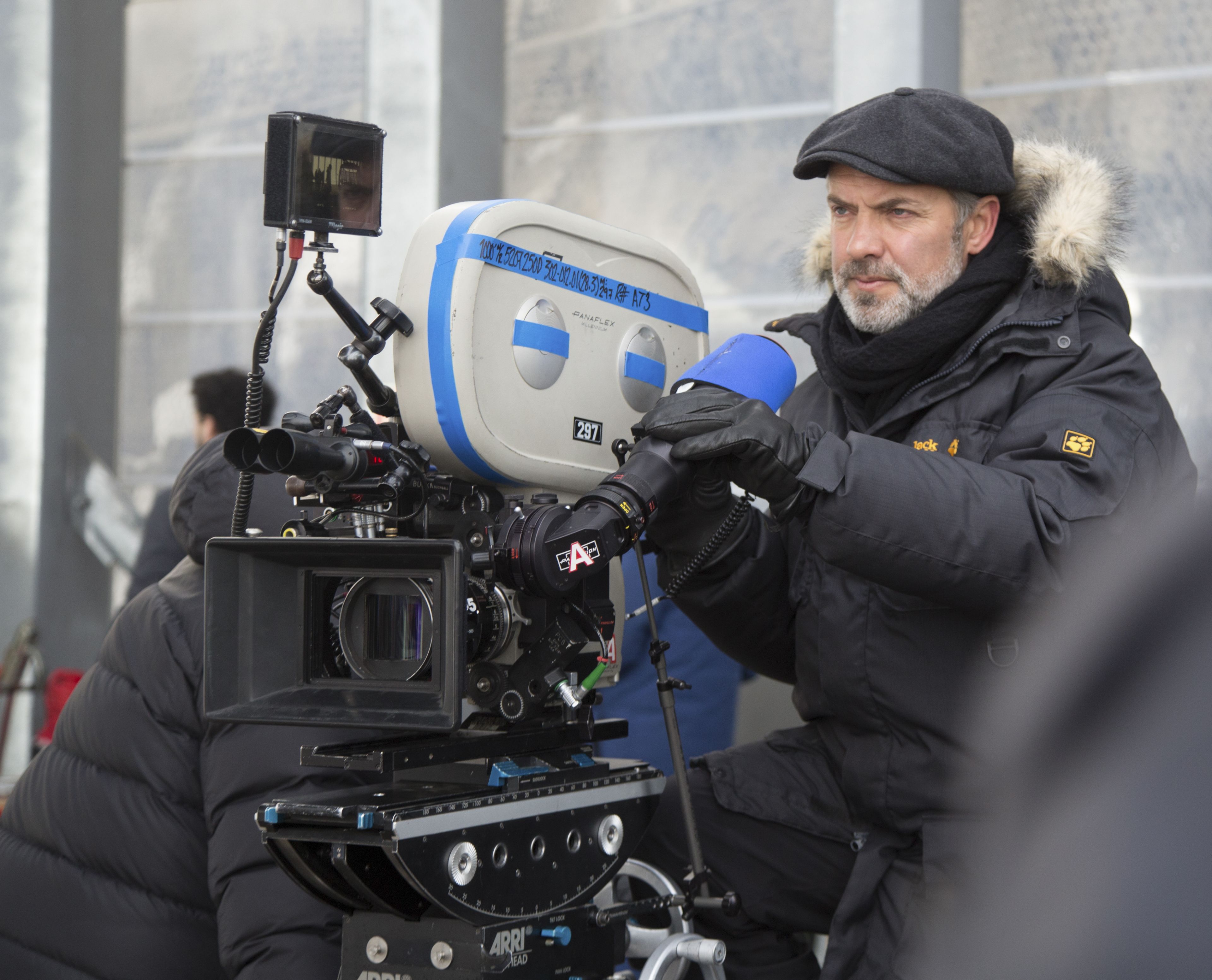 SMITH: It was a good way for Sam to see that I was on his wavelength, and with a shortened post-production period – I think 16 weeks from the end of principle photography – we really had to be editing the movie as we shot because we weren’t going to get a lot of cutting time at the other end. That system worked really well and Sam was great. I’d be posting the sequences on a nightly basis and he’d be calling me to give me ideas or he’d just call to say, “Great. Keep moving.”
SMITH: It was a good way for Sam to see that I was on his wavelength, and with a shortened post-production period – I think 16 weeks from the end of principle photography – we really had to be editing the movie as we shot because we weren’t going to get a lot of cutting time at the other end. That system worked really well and Sam was great. I’d be posting the sequences on a nightly basis and he’d be calling me to give me ideas or he’d just call to say, “Great. Keep moving.”
HULLFISH: What was the principle photography schedule?
SMITH: Six months. Starting in December going thru to June. Daniel got hurt in the train fight sequence, so we got delayed a bit while he recovered. Like a lot of films, you are thrown a couple of curve balls during the shoot. We were a bit weather-dependent and that eventually took its toll. I’d say there was another two weeks after principle photography was supposed to end with multiple units shooting the whole time.
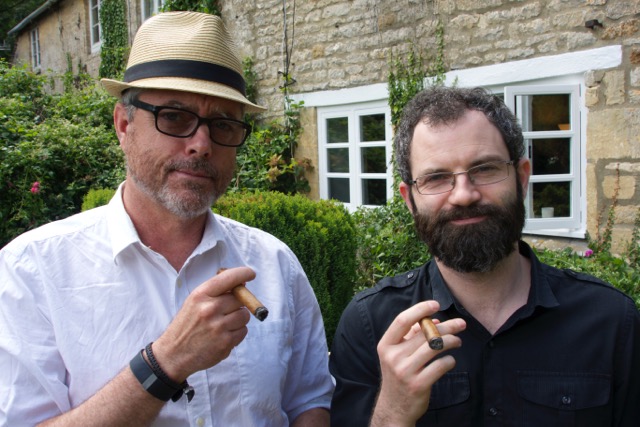 HULLFISH: Were you editing in London or L.A.?
HULLFISH: Were you editing in London or L.A.?
SMITH: London. The whole show was based out of the UK.
HULLFISH: Pinewood?
SMITH: Yeah. Pinewood, then we moved to SOHO for post. (John Lee, first assistant editor on the left, and Jeremy Richardson, assistant editor on the right.)
HULLFISH: I want to get back to your editing approach. It’s awesome that you consider it so easy and basic, but I want to dive a bit deeper. Do you use a selects reel, for instance or do you cut directly from the dailies?
spectre-Spectre_Clip_Hotel_Stereo_h264_hd from Steve Hullfish on Vimeo.
SMITH: Normally, for a straightforward scene I would just cut it straight from dailies. If it’s a complex action sequence, for example the helicopter doing all of the barrel-rolls, that sequence was shot over five days of principle photography and probably ten days of second unit – so maybe 100,000 feet just for that one scene. I would sit in a theater and pull selects while I was watching it. I’d be talking to my assistant, John Lee, and I’d be saying, “That’s a good take.” “That angle’s good.” “That camera’s good.” Then I’d pull a selects reel of all of the best moments. Just try and do a fast pass of just bolting it together because the only way you can actually see your way through these big, big sequences, it’s a good idea not to let them overwhelm you. Just do a slam cut where everything happens as it should happen in about the right time and don’t worry too much about jazzing it up. Just make it make sense and then go back, but you’ve at least got the structure, so you’ve built the house before you come in and do the fine sanding.
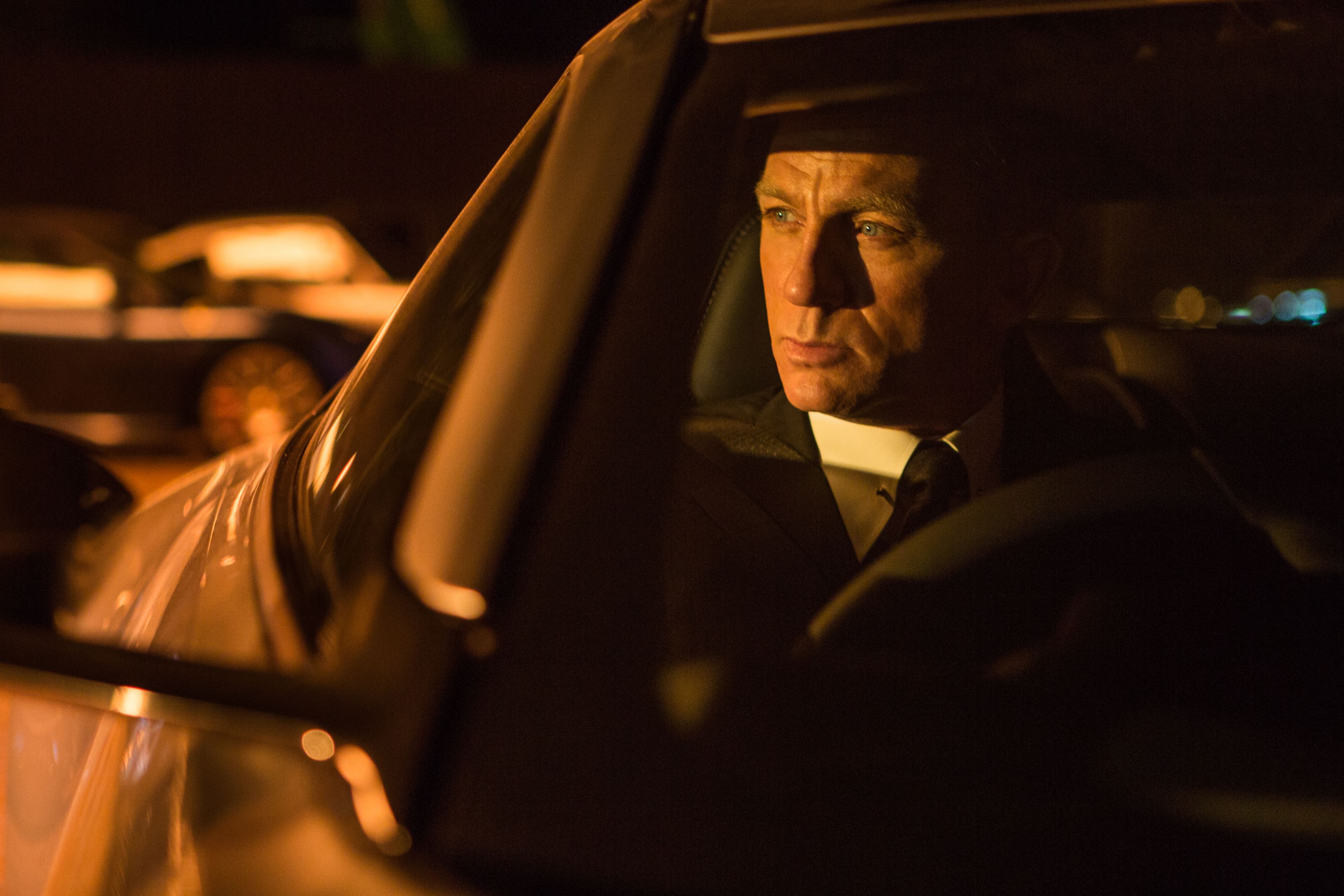 HULLFISH: That makes a lot of sense. On a simpler scene do you feel like you can take that approach because you’ve already made some decisions in your head when you were watching dailies? You’ve got a sense of the moments you’d like to see or maybe an idea of the opening shot?
HULLFISH: That makes a lot of sense. On a simpler scene do you feel like you can take that approach because you’ve already made some decisions in your head when you were watching dailies? You’ve got a sense of the moments you’d like to see or maybe an idea of the opening shot?
SMITH: Yeah. I think so. I remember very specifically on “The Dark Knight ” the scene where Batman interrogates the Joker and there were very specific moments in the body of that scene – and that had a lot of coverage and it was a big scene – but there were moments that were very striking and it’s a thing where it just prints into your brain in dailies and then you remember it as you’re editing and you think, “That wide shot where he gets launched across the table was incredibly shocking. So that’s what I want to use. I don’t want to overcut it. I want to stay in there.” And moments of performance that stick in your mind. I try to not overthink it. I’ve worked with editors over the years, not recently, but in the early days where they’d get stuck by continuously second-guessing and overthinking what they were doing and endlessly analyzing. I think a free-form edit often turns out better rather than sitting there worrying about every little thing that you can possibly worry about and finding that you obsess on one moment. I keep thinking of the film as an entire piece, not one section. You’ve got to run the movie as many times as you can fit in your schedule and we would normally run the movie at least once a week while we were in post, projected, because you can just get bogged down in a sequence and you realize that you’re applying too much time to something that’s unimportant and not enough time to something that’s very important.
HULLFISH: Meaning the overall structure of the film and seeing the scenes within the context of that structure?
PLEASE CLICK “NEXT” TO CONTINUE READING
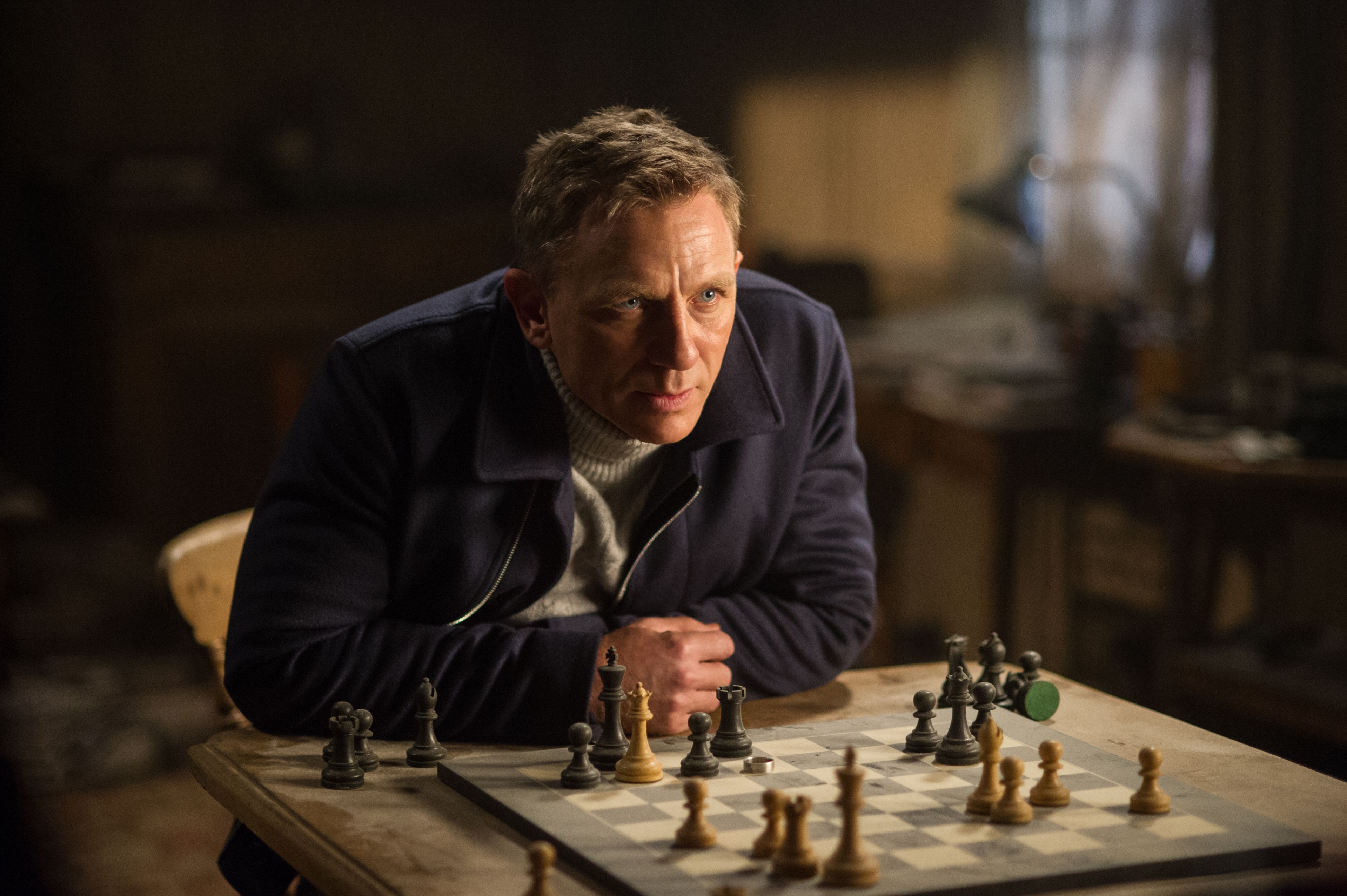 SMITH: That’s what I think. I think the rhythm, the pace, the story points, you’ve got to make sure you’ve got all that humming along. Spending three weeks fiddling with an action sequence is not going to do you any favors when you project the movie at the other end. There’s always time to improve and go back. I never feel like I’ve run out of time ever. I’m always comfortable knowing I’ve given every sequence it’s full due. But the faster you get to a working film and then refine it – rather than have a “not working film” and trying to refine that – that’s when you’re in a world of pain.
SMITH: That’s what I think. I think the rhythm, the pace, the story points, you’ve got to make sure you’ve got all that humming along. Spending three weeks fiddling with an action sequence is not going to do you any favors when you project the movie at the other end. There’s always time to improve and go back. I never feel like I’ve run out of time ever. I’m always comfortable knowing I’ve given every sequence it’s full due. But the faster you get to a working film and then refine it – rather than have a “not working film” and trying to refine that – that’s when you’re in a world of pain.
HULLFISH: I was talking to Billy Fox about people who use selects reels a lot and he said, “Ah…you’re overthinking your choices. I don’t have to look at five takes of a guy saying a line back to back. I know what the right line is.”
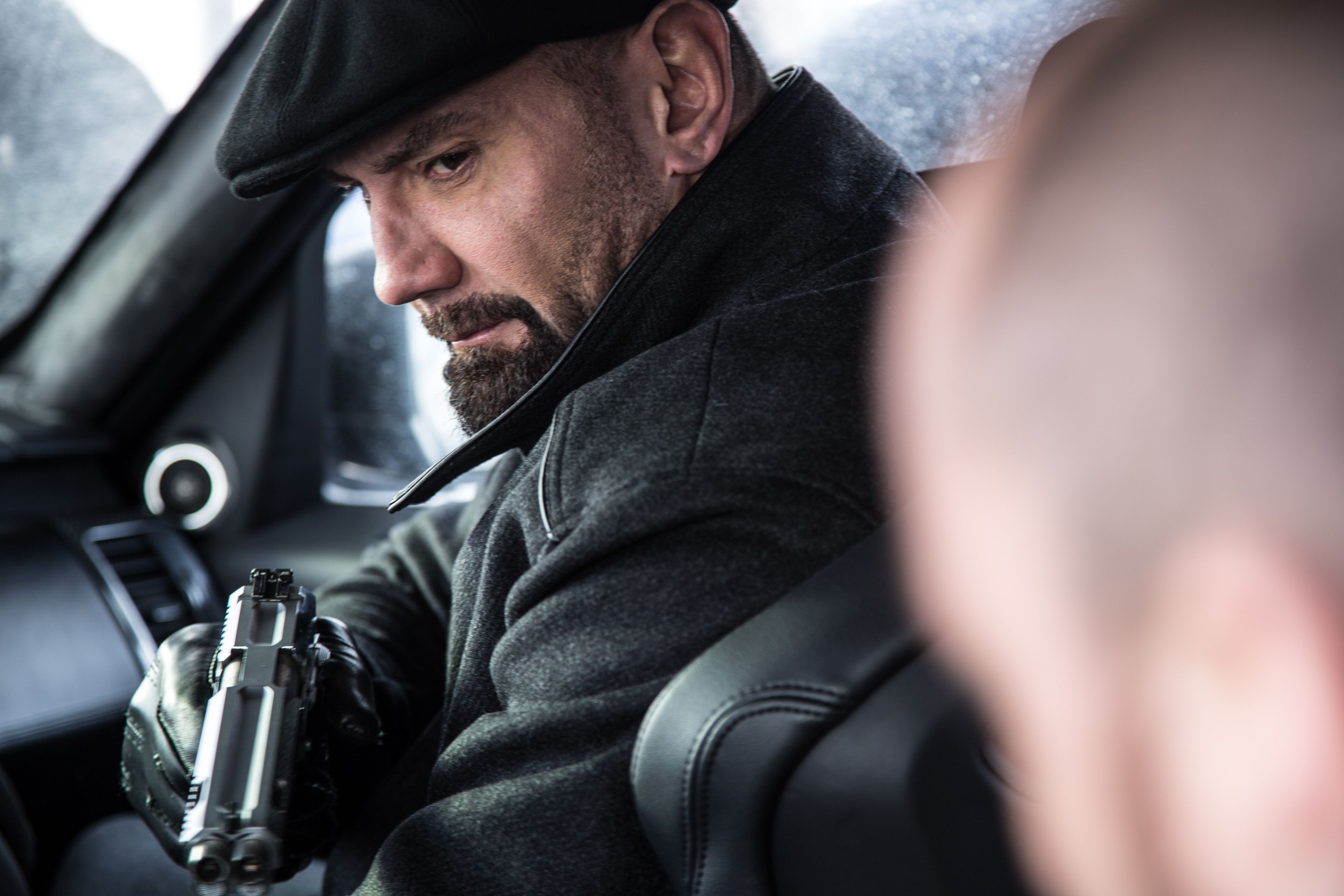 SMITH: To qualify my use of selects reels: I never make selects of performance. It’s only action. I’ve never made a selects reel of performance in my life.
SMITH: To qualify my use of selects reels: I never make selects of performance. It’s only action. I’ve never made a selects reel of performance in my life.
HULLFISH: Let’s talk about performance for a bit. What catches your eye? Like that Joker scene. How much are you molding the performance and how much are you being a steward of the actors?
SMITH: I think it’s something that simply falls down to taste. You can’t second guess it. I always cut what I like. I don’t think about what anybody else likes. I had to do what I like. Because as soon as you think about “Well, what would the other person like?” you’re dead. Because now you’re no longer using your own in-built sense of rhythm and pacing and taste and when I was editing in the early days, I quite often would make that mistake and I’d be thinking, “Well, what’s the director going to like?” As an editor you’re obviously making the movie with the director and you’re pleasing the director. That’s critically important, especially with a good director. I have had the good fortune of working with some of the great directors and the simple nature of making the right decisions please them. But you don’t ever reverse engineer your thoughts. It’s the same thing with saying, “What would the audience like?” It’s a very dangerous game because if we all knew what the audience would like, it would be simple and every film would be a hit. You’ve got to try not to tailor your thoughts to anybody else’s thought pattern. Not the studio, not the director, not the producer… you’ve just got to be faithful and you’ll succeed or fail simply based upon that.
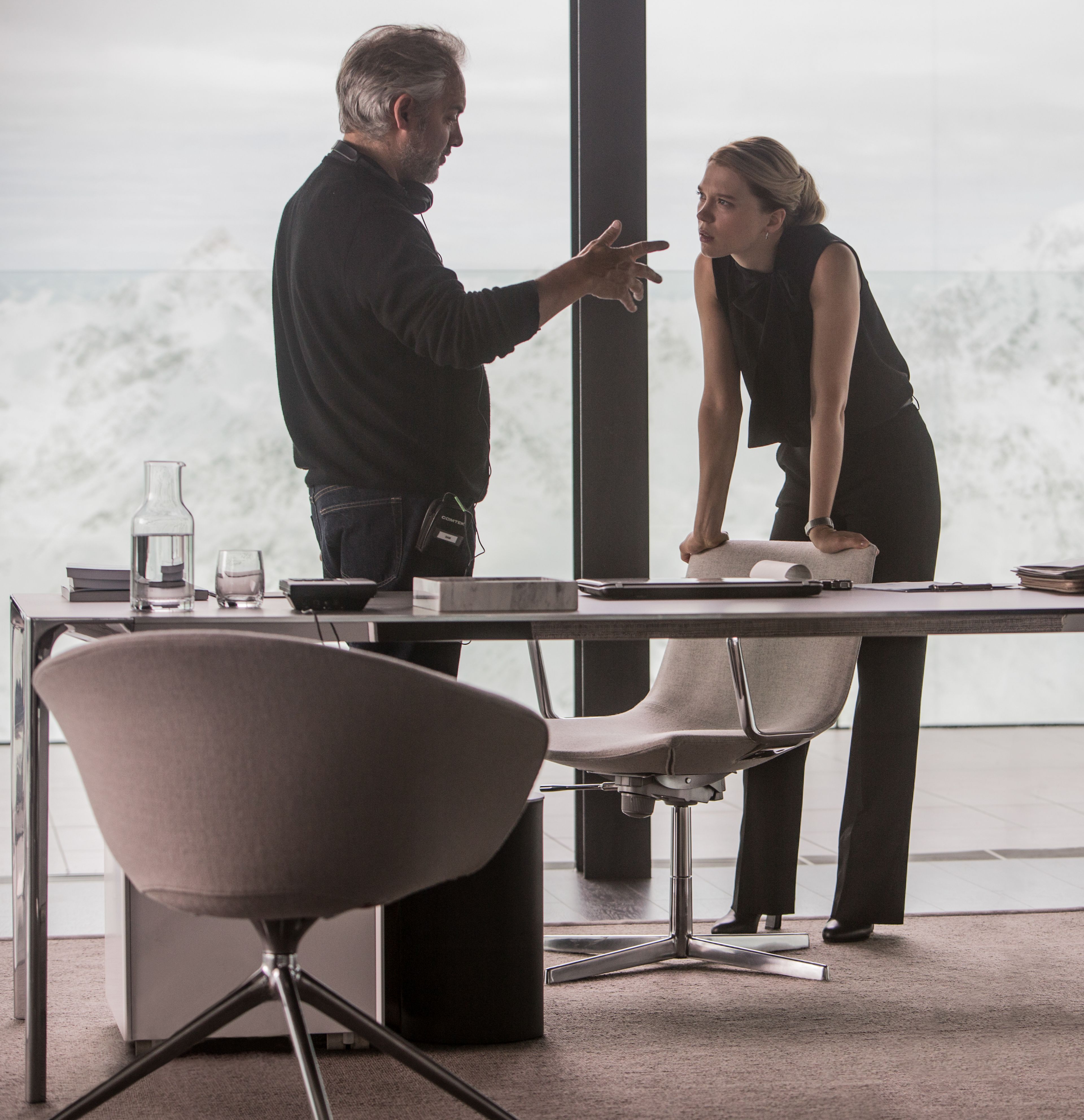 HULLFISH: How much are you able to influence performances just by the timing of the delivery of lines or are you trying to be fairly faithful to the actors?
HULLFISH: How much are you able to influence performances just by the timing of the delivery of lines or are you trying to be fairly faithful to the actors?
SMITH: On occasion, but if you’re working on a top level film with top level actors and a top level director, it’s rare. If you’re working with a lesser director then that can happen. Or if you’re working with a great director who has a very organic outlook and they’re not prepared to stick with something just because of what they’ve done before and they’re trying to push the envelope. It’s a fascinating thing and if there is something incorrect, it just jumps out at me, even before I play back for the director at the end of the shoot. I would have solved that problem or made the director aware of my concerns.
HULLFISH: Talk to me about how important sound design is in selling your cuts and making you feel like you’re delivering something that is going to get approved.
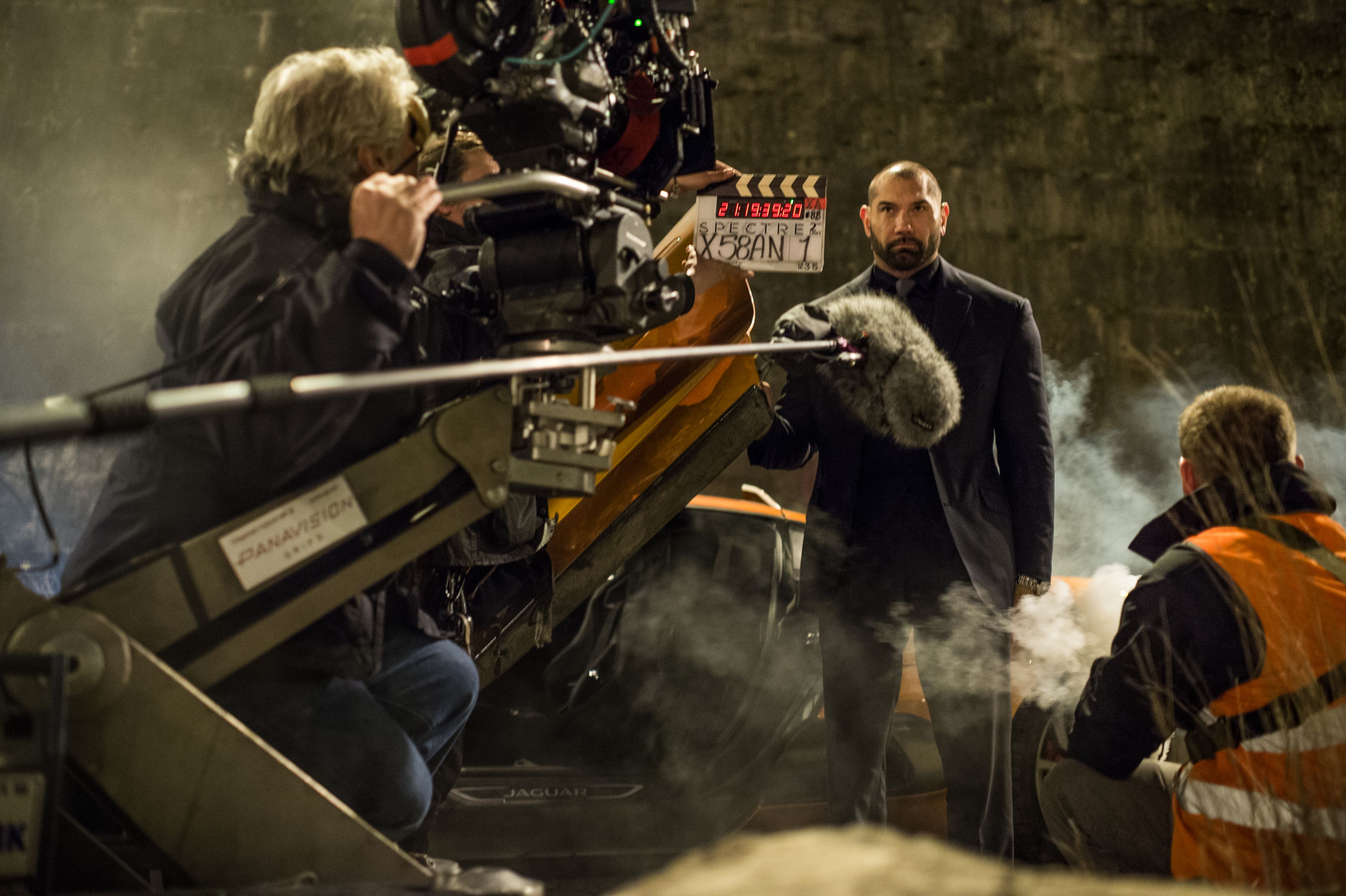 SMITH: I think that’s critical. Movies don’t go out without sound and they don’t go out without music, which is another topic. But if you’re talking sound design and sound effects I will use my SFX library the whole time I’m cutting because, let’s face it, a lot of the time people will be miming gunshots or you’ll have an intimate scene and you can hear a generator going. I need to kill that distraction as quickly as possible so it’s easier to see what the scene is about. It’s annoying if you get sequences that are shot with bad sound and luckily I work with director’s who are incredibly sound literate, but so am I, so I don’t cut anyone any slack for bad location sound. Figure it out. Take the time. ADR last resort. Get it right.
SMITH: I think that’s critical. Movies don’t go out without sound and they don’t go out without music, which is another topic. But if you’re talking sound design and sound effects I will use my SFX library the whole time I’m cutting because, let’s face it, a lot of the time people will be miming gunshots or you’ll have an intimate scene and you can hear a generator going. I need to kill that distraction as quickly as possible so it’s easier to see what the scene is about. It’s annoying if you get sequences that are shot with bad sound and luckily I work with director’s who are incredibly sound literate, but so am I, so I don’t cut anyone any slack for bad location sound. Figure it out. Take the time. ADR last resort. Get it right.
HULLFISH: I interviewed Mike Hill and Dan Handley about “Into the Sea” and they were talking about scenes with wave machines and wind machines and there’s no way to get useable sound. And they said that was very difficult to cut because of that. You can’t hear any dialogue at all.
SMITH: We had that on “Master and Commander” where we were shooting in the tank at Rosarito (Mexico). (http://www.bajafilmstudios.com/) where we shot all of the storm sequences. I the studio to build a small ADR studio while we were on location because in that instance there’s no way to use what was recorded, but we always pushed that it didn’t matter what the problem was, “Roll sound. It’s vital.” Because even if it’s the tiniest squeak of a noise, it gives us some direction and sync. I know we’re going to have to ADR, but pretend we’re not using ADR, and they did. At the same time, we’d steal the actors straight after that day and wheel them into our little ADR booth and get them to re record their dialogue because some of the original recordings were completely inaudible and the actors were kind of ad-libbing.
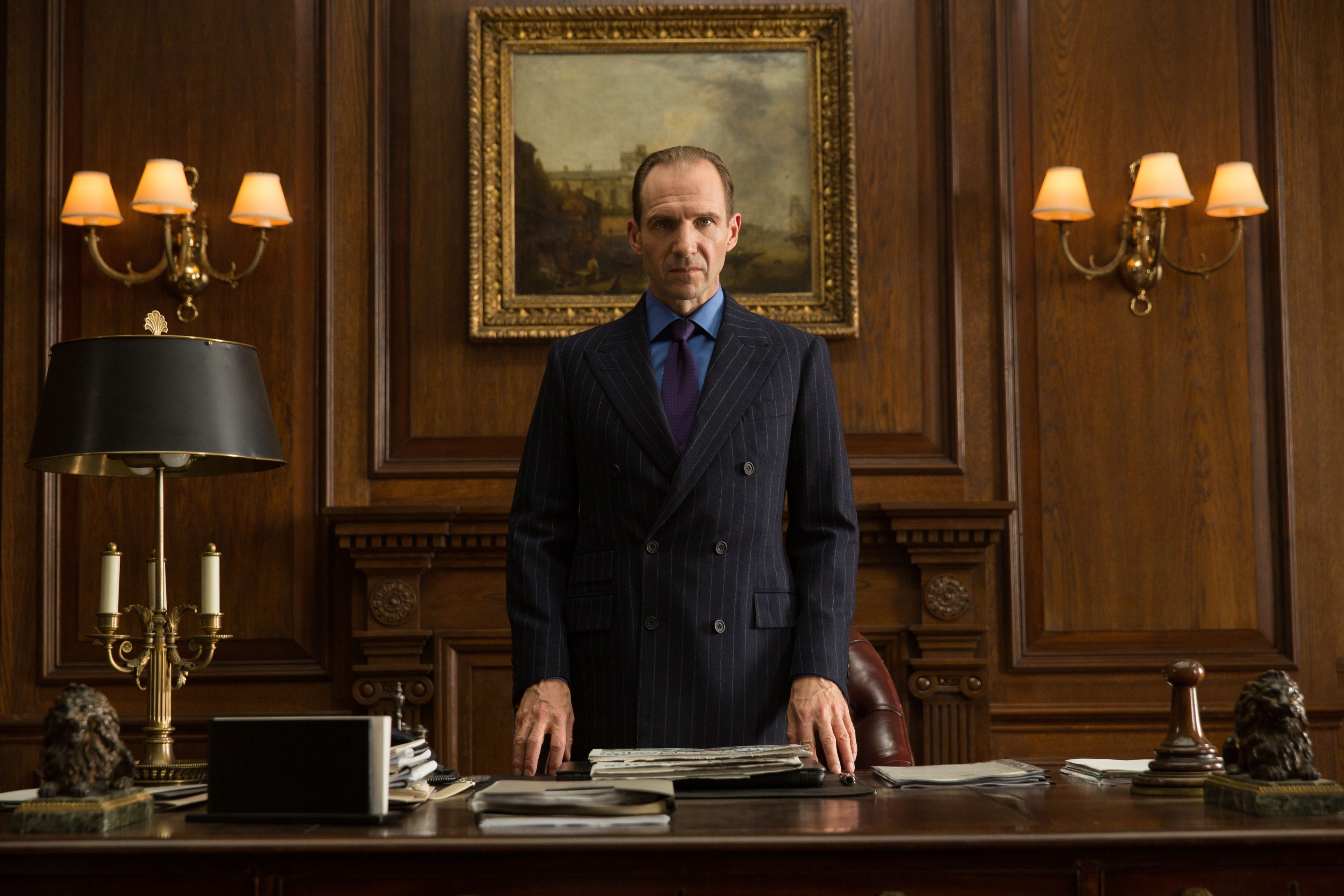 If you waited six months, no one would know what they were saying. It’s just lips flapping in the background. In general terms they could all remember, so we’d just shoot a whole load of takes and at least I could edit with something where I could put the storm effects in and I could play it back so the scene would make sense. There were vital story points in the body of that. I generally cut sequences like that mute because you don’t want to be swayed by the crapness of the location sound. I would cut it all mute and then go in and patch the sound review it ,then go in and have another cut mute and then patch the sound again. Because I’d found in the early days when I was a kid, I wouldn’t do that and I’d get very frustrated and very confused by what I was doing because I was trying patch the sound as I went to make it all work at the same time and it was like trying to steer something that just kept crumbling underneath me.
If you waited six months, no one would know what they were saying. It’s just lips flapping in the background. In general terms they could all remember, so we’d just shoot a whole load of takes and at least I could edit with something where I could put the storm effects in and I could play it back so the scene would make sense. There were vital story points in the body of that. I generally cut sequences like that mute because you don’t want to be swayed by the crapness of the location sound. I would cut it all mute and then go in and patch the sound review it ,then go in and have another cut mute and then patch the sound again. Because I’d found in the early days when I was a kid, I wouldn’t do that and I’d get very frustrated and very confused by what I was doing because I was trying patch the sound as I went to make it all work at the same time and it was like trying to steer something that just kept crumbling underneath me.
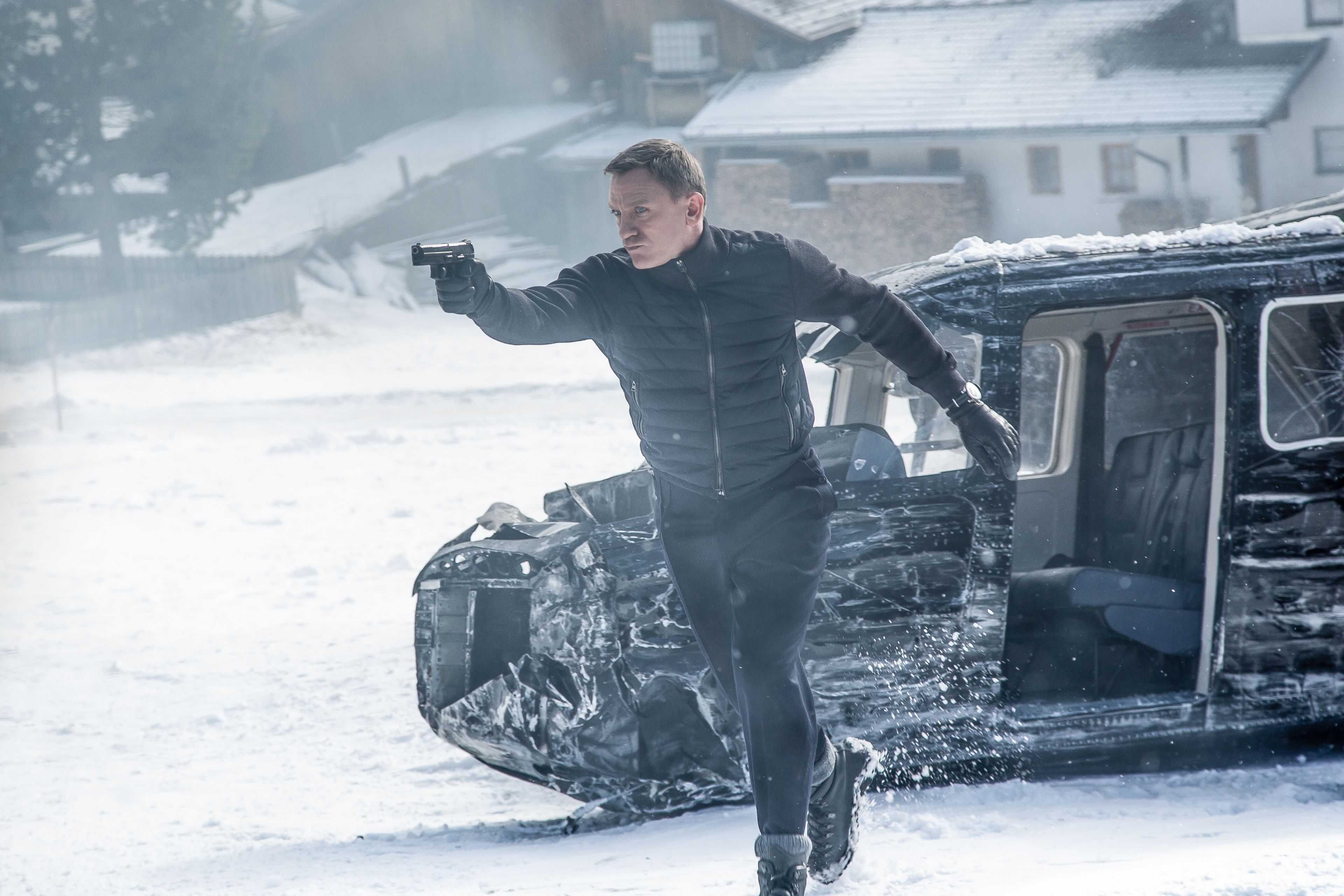 HULLFISH: Because of the sound…
HULLFISH: Because of the sound…
SMITH: Yes. I was so sound literate that I just couldn’t bear it. I was fixing the sound, cutting picture all at once and it just wasn’t working. Then as soon as I turned the sound off… it’s funny, your brain has to process a whole lot of information, and if you turn off the sound, there’s a whole lot of stuff you’re no longer thinking about. You can just build a very complicated sequence a lot quicker.
HULLFISH: Tell me about your sense of music. Several people have mentioned that they start listening to potential temp music as soon as they know they’re going to work on a picture.
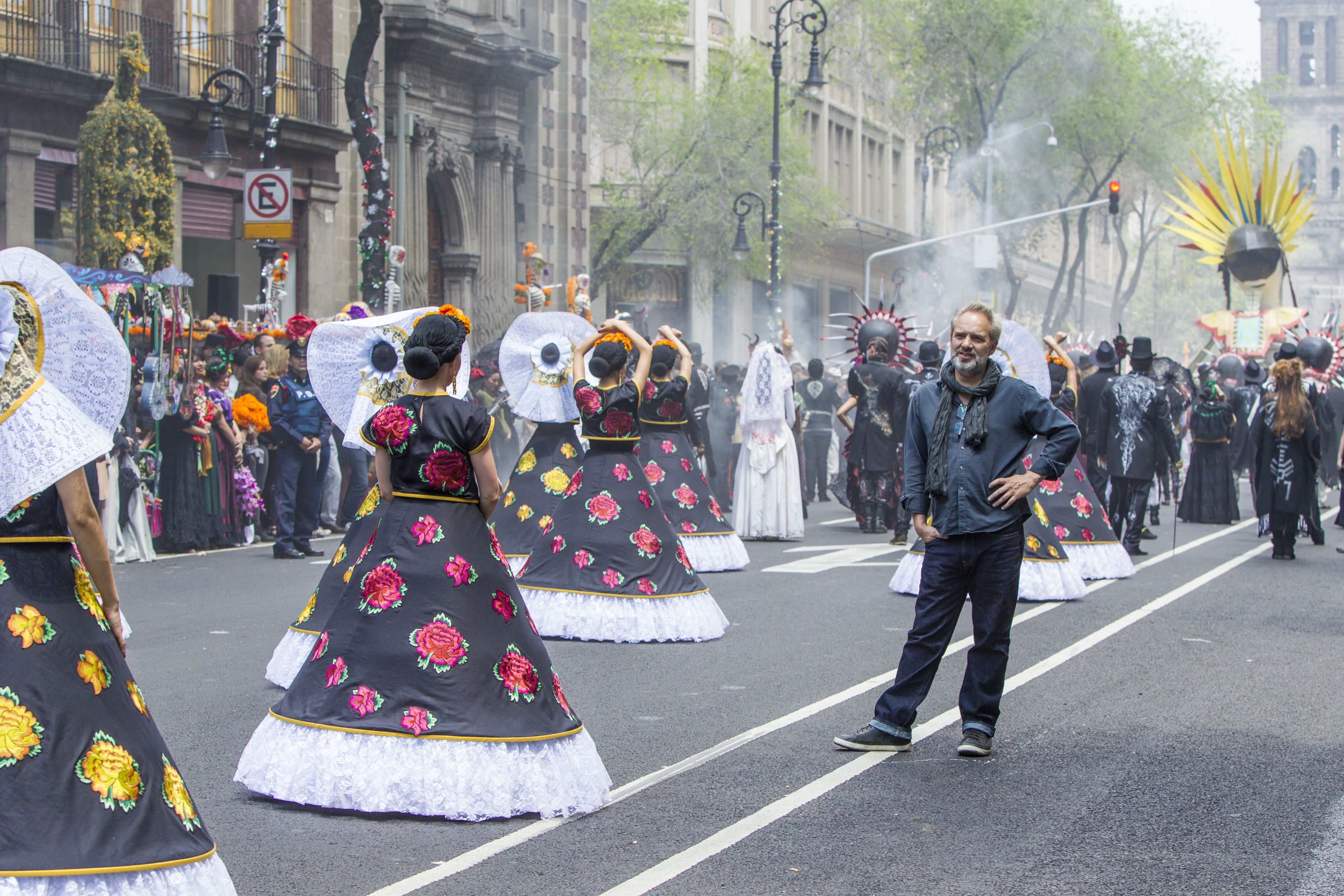 SMITH: I kind of mix it up a bit. When I started cutting with Chris Nolan, he asked me to not use any temp music at all in the initial assembly. Of course I was thought, “Geez, that’s going to be hard!” I did it and it proved that you are so much more critical of the picture and the story when you’re not leaning on the music. The music is the great candy wash that comes at the other end. So we’d wait until Chris would come in. We’d do a whole pass of the movie with no music whatsoever – not a note. Then we’d start applying the music. In the case of Chris, Han Zimmer had composed all of the music for his studio films except for one. Han’s was off beavering away, creating a suite of music that we’re listening toevery few days, but we’re not applying it to the cut. When we get the movie working without music then we apply the music. It’s a very strict, regimented way of making the films and it works as a process. It makes you incredibly diligent with what you use because a few films where I’ve helped out on, I’ve realized that when you strip the music away, you see all of the problems and when the music’s playing, you kind of don’t. It’s interesting. It’s like taking your pants down or opening the kimono. All of a sudden it ain’t as pretty underneath as you were hoping. Then when you rebuild it and then put the music back on, it’s made it a much better film. But then there’s the instance of Sam Mendes or Matthew Vaughn with “X-Men First Class.” I tried it with them, but they don’t like watching cuts without music, and that’s fine because I’ve done that before. In the case of “Spectre” I got a music editor on very early on and we took apart the existing score from “Skyfall” and strung that out and rebuilt cues to suit the new film, just to give us the temp score. We needed it to be in Bond’s world. I saw no reason to pull temp score from other films. We did use other existing score in moments where we clearly couldn’t build it from Skyfall, but it was great because we were doing a really polished version of a score underneath the editor’s cut and it worked and whenever we played it for producers or Sam I think there was only once or twice where he said we missed the point with the music, but for 90% of the time we were on the money and I think when we started working with Thomas Newman and he was re-writing it, he knew mode and placement or the temp score was pushing all the right emotional buttons. I know that would have been hard for him, because it’s already his score and I know how tough that is, but I kept saying to him, “But it’s so good!” I can’t put other composers scores on this movie! (laughs) He was great and incredibly collaborative. There were a couple of sequences that we couldn’t get right in the temp, even as I was assembling them with the existing music or other temp music and he demoed up those sequences to fix that problem. By the time we came to do audience screenings we had a soundtrack that sounded like a finished movie. No one would have known that film wasn’t finished when the audience test screened it.
SMITH: I kind of mix it up a bit. When I started cutting with Chris Nolan, he asked me to not use any temp music at all in the initial assembly. Of course I was thought, “Geez, that’s going to be hard!” I did it and it proved that you are so much more critical of the picture and the story when you’re not leaning on the music. The music is the great candy wash that comes at the other end. So we’d wait until Chris would come in. We’d do a whole pass of the movie with no music whatsoever – not a note. Then we’d start applying the music. In the case of Chris, Han Zimmer had composed all of the music for his studio films except for one. Han’s was off beavering away, creating a suite of music that we’re listening toevery few days, but we’re not applying it to the cut. When we get the movie working without music then we apply the music. It’s a very strict, regimented way of making the films and it works as a process. It makes you incredibly diligent with what you use because a few films where I’ve helped out on, I’ve realized that when you strip the music away, you see all of the problems and when the music’s playing, you kind of don’t. It’s interesting. It’s like taking your pants down or opening the kimono. All of a sudden it ain’t as pretty underneath as you were hoping. Then when you rebuild it and then put the music back on, it’s made it a much better film. But then there’s the instance of Sam Mendes or Matthew Vaughn with “X-Men First Class.” I tried it with them, but they don’t like watching cuts without music, and that’s fine because I’ve done that before. In the case of “Spectre” I got a music editor on very early on and we took apart the existing score from “Skyfall” and strung that out and rebuilt cues to suit the new film, just to give us the temp score. We needed it to be in Bond’s world. I saw no reason to pull temp score from other films. We did use other existing score in moments where we clearly couldn’t build it from Skyfall, but it was great because we were doing a really polished version of a score underneath the editor’s cut and it worked and whenever we played it for producers or Sam I think there was only once or twice where he said we missed the point with the music, but for 90% of the time we were on the money and I think when we started working with Thomas Newman and he was re-writing it, he knew mode and placement or the temp score was pushing all the right emotional buttons. I know that would have been hard for him, because it’s already his score and I know how tough that is, but I kept saying to him, “But it’s so good!” I can’t put other composers scores on this movie! (laughs) He was great and incredibly collaborative. There were a couple of sequences that we couldn’t get right in the temp, even as I was assembling them with the existing music or other temp music and he demoed up those sequences to fix that problem. By the time we came to do audience screenings we had a soundtrack that sounded like a finished movie. No one would have known that film wasn’t finished when the audience test screened it.
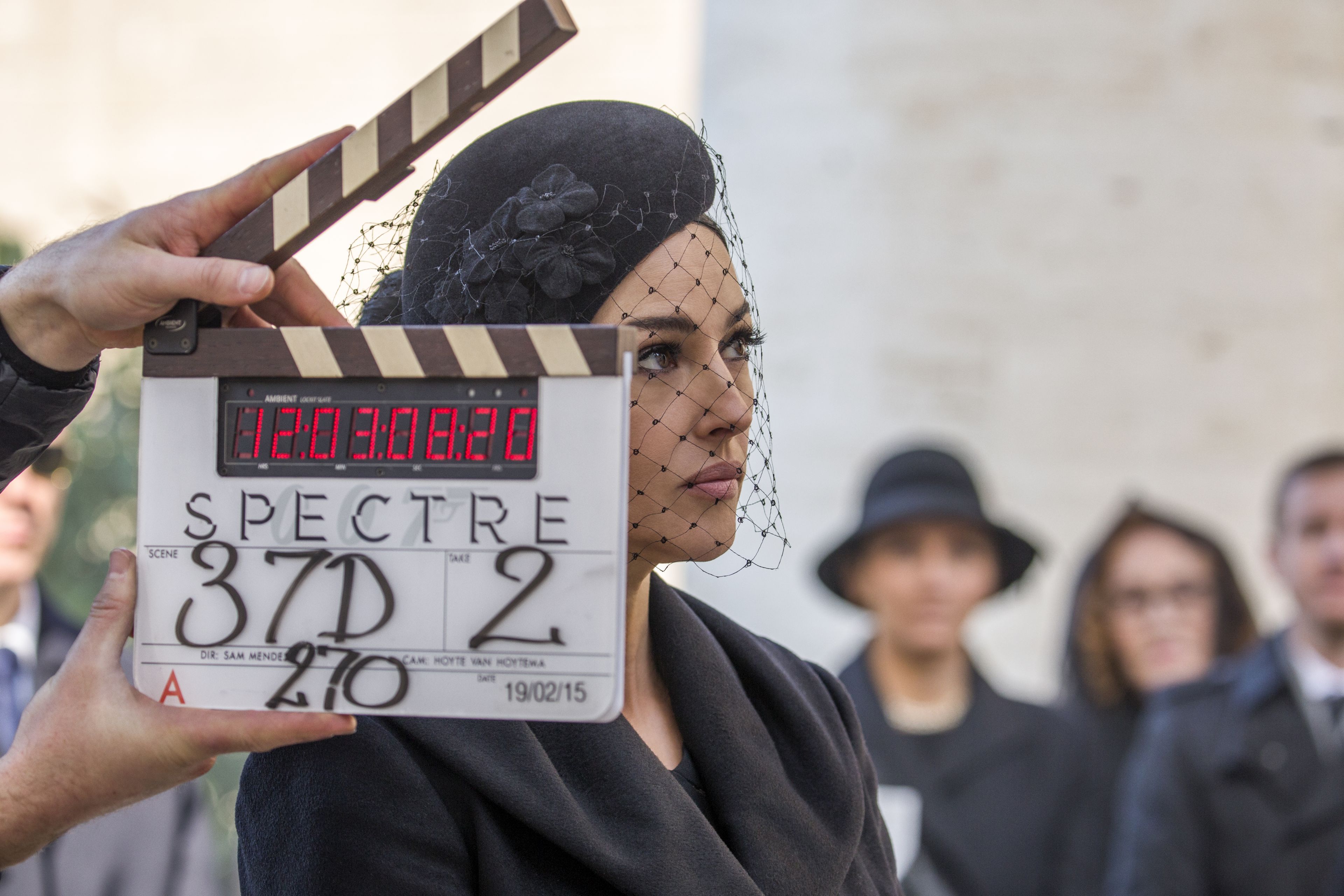 HULLFISH: Hans Zimmer and Thomas Newman… it’s rough being you and working with these hack composers. I don’t know how you do it.
HULLFISH: Hans Zimmer and Thomas Newman… it’s rough being you and working with these hack composers. I don’t know how you do it.
SMITH: It’s really quite extraordinarily difficult (laughs) These guys are at the top of their game. I’ve worked with other great composers and some really young composers and all they’re missing is experience. Their talent is fantastic, but you’ve got to put the years on. This is an industry of experience and I think people get very excited about using someone who has never composed a feature film before and I say, “What have they done before?” Not to say that doesn’t work on occasion but experience buys you a guarantee .
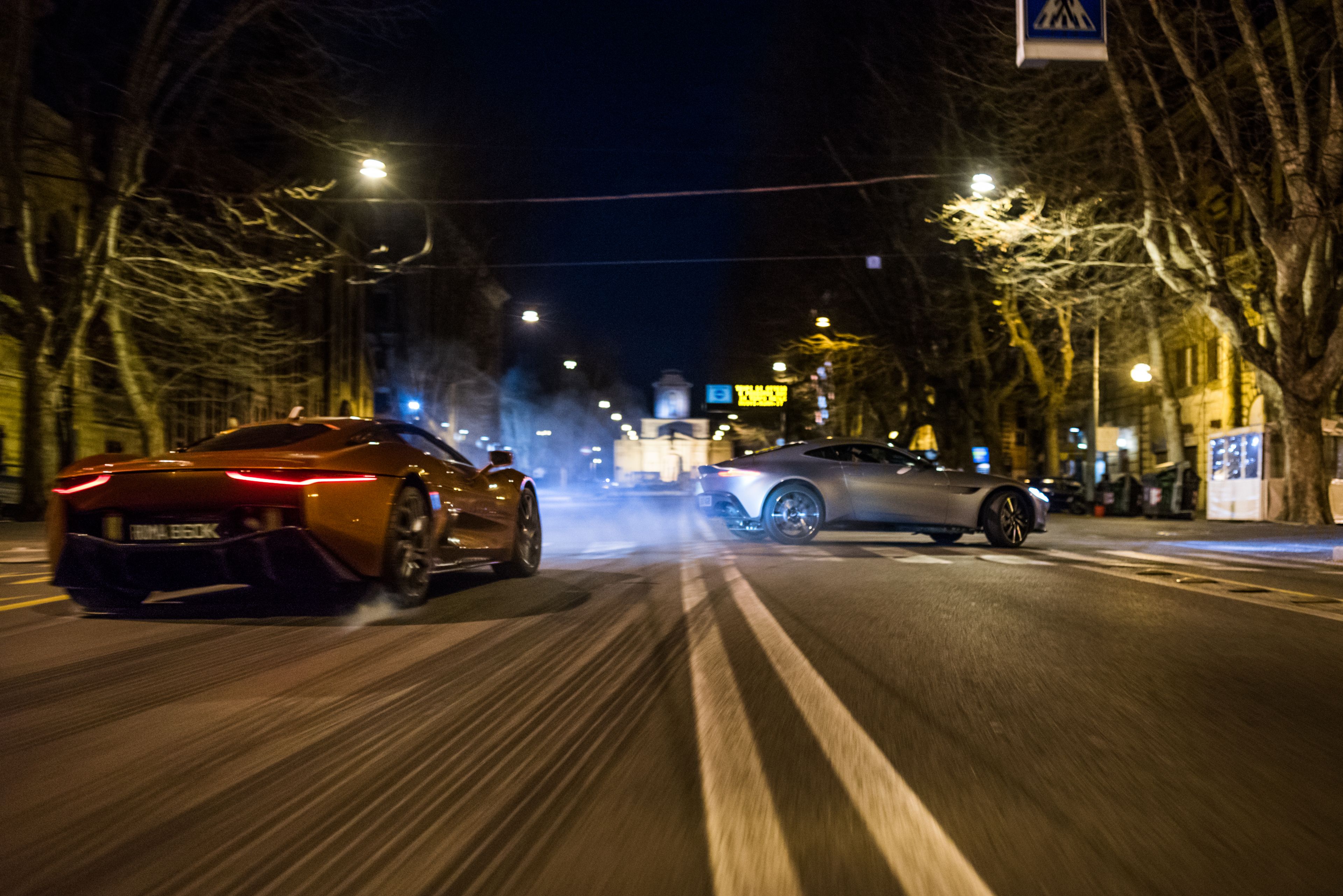 HULLFISH: I want to go back to the approach to a scene. Like with Joker and Batman moment where you knew you had this great moment you were trying to hit halfway through the scene. Were you still working linearly or were you trying to back yourself in to that moment?
HULLFISH: I want to go back to the approach to a scene. Like with Joker and Batman moment where you knew you had this great moment you were trying to hit halfway through the scene. Were you still working linearly or were you trying to back yourself in to that moment?
SMITH: I think even with that moment with the Joker I wasn’t consciously saying “I had to get there.” It was more just in the back of my mind. There are moments that I like and in that initial assembly I find that the hard part of editing that I like to push through is the construction and the mechanics of the scene and you know when you have it kind of right. As for the entry, I don’t worry so much in the initial assembly of the scene because I don’t know what’s coming before or after since I’m editing as they’re shooting, don’t obsess about that because who knows when you want to go in to a super close up or whether you want to go wide on that first cut. That will come later when you have all the connecting parts. I believe in geography. I like to see the environment because then eye-lines all make sense. I do see films, where, for some reason, the editor has cut tight into a scene and then clearly had forgotten that they’d run 60 seconds of dialogue and the audience doesn’t know who’s looking at whom. Then they might cut out wide just because they fancied ending on a wide shot. But the whole problem for me is that it’s confusing because if there’re four people talking and they’re in a room and you’ve never set up that geography. I don’t want to say that there are any hard rules. There are times when that confusion might work to your advantage. Maybe that’s what you’re looking for, but I still like to get an understanding of the environment when I go in and then once I’m in I don’t particularly like going back out again. I always say to the guys I work with, “You’ve got to have a reason to cut. Don’t just cut.” Anyone can do that. You sit there and you’re bored, so you cut. You’re bored, so you cut. It’s terrible. It’s not a good reason. You cut for dramatic reasons. You cut to shift emphasis. You cut for a reaction that’s stronger than a line. That’s how you cut in my opinion.
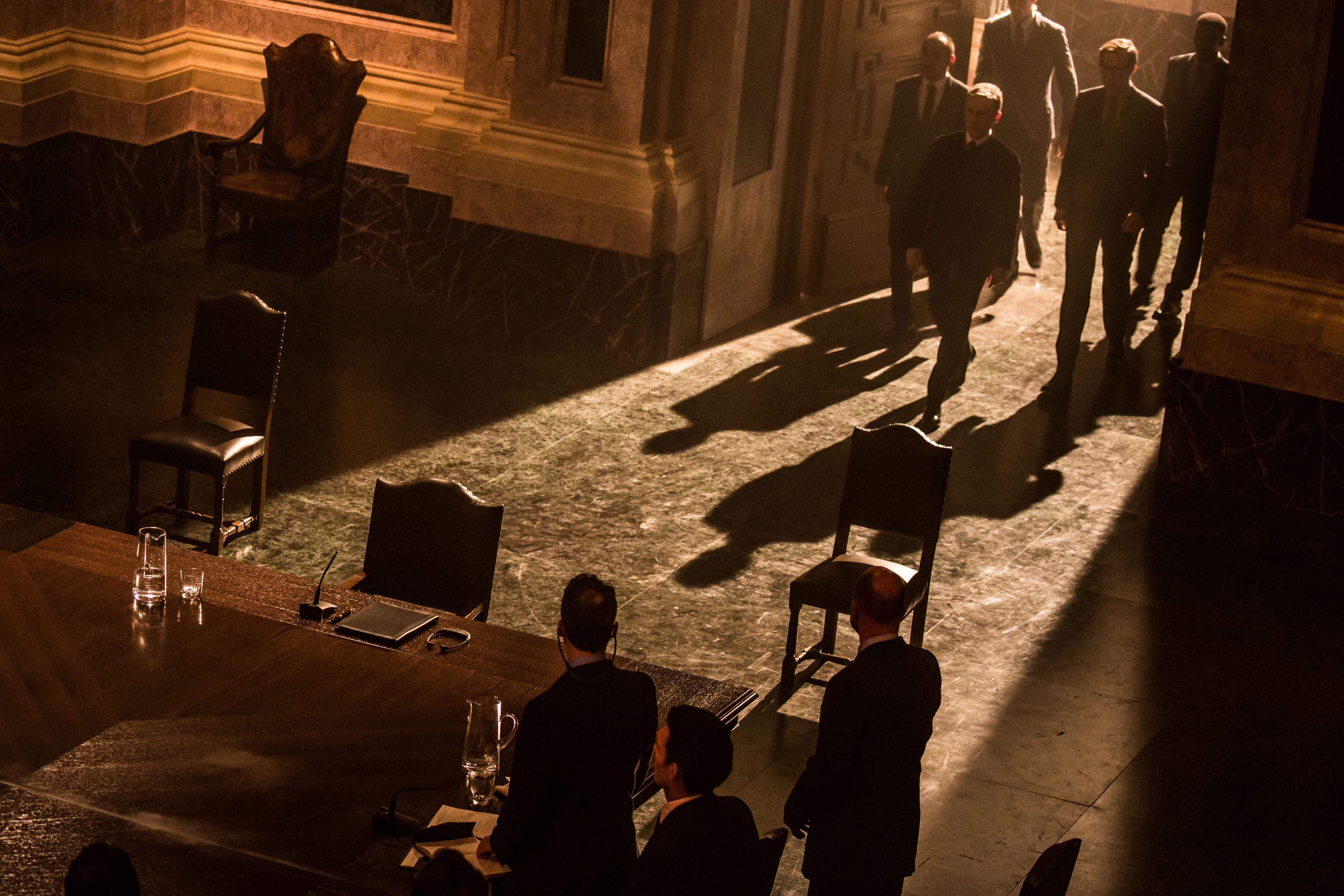 HULLFISH: I was just thinking of a scene that I cut recently where I cut back to the wide in the middle of the scene – an emotional scene – but the reason was that the conversation hit a wall and I wanted to show that both parties were at an impasse… basically at a loss for words.
HULLFISH: I was just thinking of a scene that I cut recently where I cut back to the wide in the middle of the scene – an emotional scene – but the reason was that the conversation hit a wall and I wanted to show that both parties were at an impasse… basically at a loss for words.
SMITH: But that illustrates the point. You were cutting for a reason. And I just did a scene on a film where I’m I cut back to the wide shot in the middle of the scene too, to show the danger of the environment. As you just said, you cut to the wide to show two characters who’ve come to a pause in their dialog and rather than cut to two singles, you cut wide. There’s reason. But that’s the thing. There has to be a reason.
HULLFISH: Do you find in the grammar or the syntax of editing that you are trying to build to a close-up on a specific moment? Someone showed me a cut to a big close-up instantly and for what I thought was a rather mundane moment.
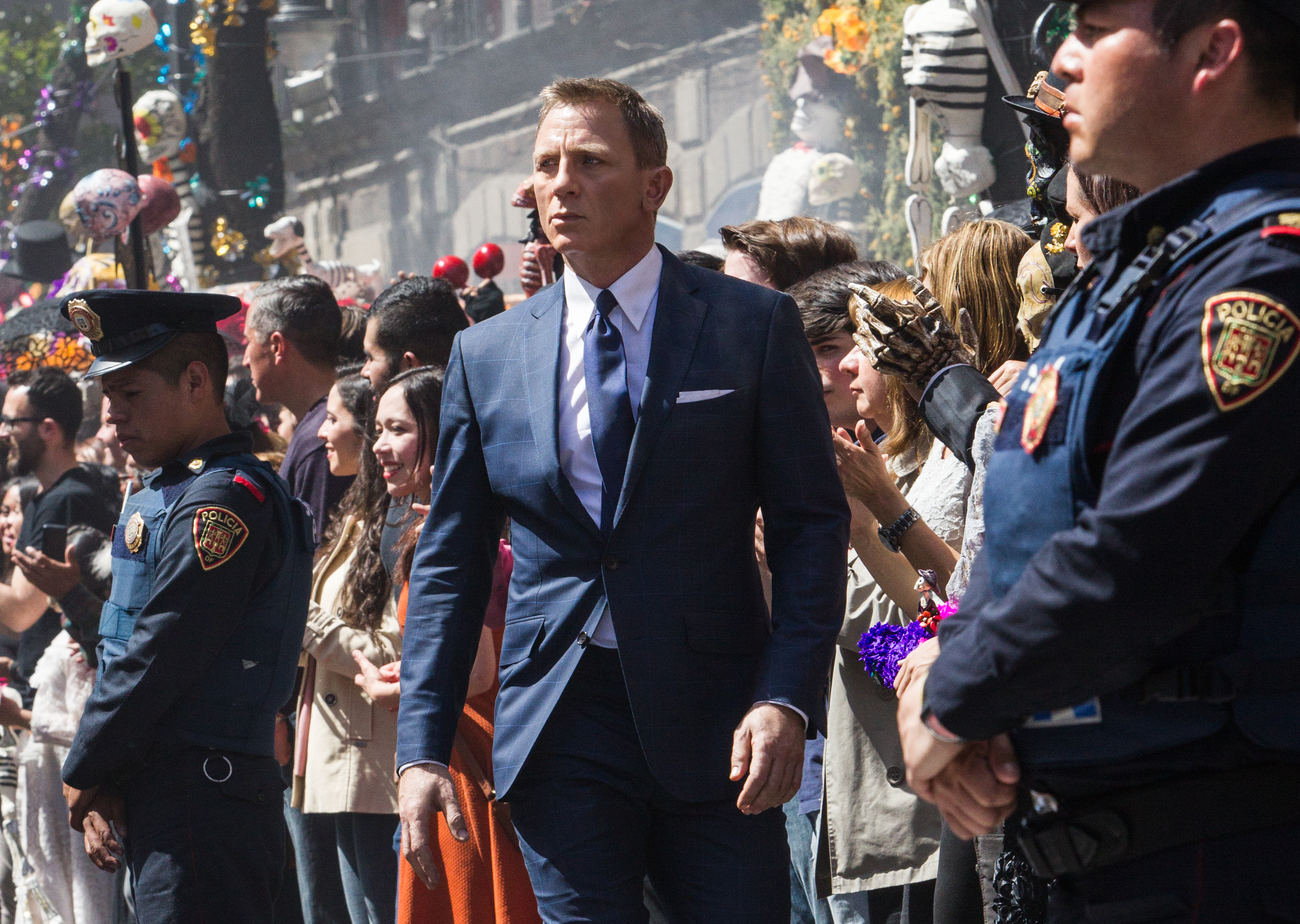 SMITH: The other trap you can fall into is that if the director shoots a lot of coverage, for example, there was a sequence in “Green Card” a Peter Weir film, where Peter had covered the sequence in super close ups. He’d covered the whole sequence conventionally, then again in profile and then shots like this (Smith mimes the framing to be an extreme close-up on from the nose to the hairline.) – just the eyes. And as a young editor I was toiling over that going, “He shot it for a reason. Why can I not figure this out?” I didn’t want to cut to these close-ups of the eyes. I didn’t get it. It wasn’t making sense to me. And when I showed him the assembly, I’d used two cuts of the eyes and he looked at me and said, “Just take out the two close-ups. That was just an idea. It’s never going to work.” I knew it wasn’t going to work but I wasn’t experienced enough to not use that angle. I just thought that it was my problem. It just goes back to me saying that if you know you’re doing something to please someone else, you’re going to make a mistake. And what I should have done was not used the close-ups and waited for him to tell me “The close-ups are for this particular moment.” Learn to go with your gut.
SMITH: The other trap you can fall into is that if the director shoots a lot of coverage, for example, there was a sequence in “Green Card” a Peter Weir film, where Peter had covered the sequence in super close ups. He’d covered the whole sequence conventionally, then again in profile and then shots like this (Smith mimes the framing to be an extreme close-up on from the nose to the hairline.) – just the eyes. And as a young editor I was toiling over that going, “He shot it for a reason. Why can I not figure this out?” I didn’t want to cut to these close-ups of the eyes. I didn’t get it. It wasn’t making sense to me. And when I showed him the assembly, I’d used two cuts of the eyes and he looked at me and said, “Just take out the two close-ups. That was just an idea. It’s never going to work.” I knew it wasn’t going to work but I wasn’t experienced enough to not use that angle. I just thought that it was my problem. It just goes back to me saying that if you know you’re doing something to please someone else, you’re going to make a mistake. And what I should have done was not used the close-ups and waited for him to tell me “The close-ups are for this particular moment.” Learn to go with your gut.
HULLFISH: With that many coverage options, I spoke to someone else that said they try to never go back to the same shot, or never repeat themselves. Do you feel that necessity? I feel like, if I’ve got a great close-up, I can cut to that as many times as I need to.
PLEASE CLICK “NEXT” BELOW TO CONTINUE READING
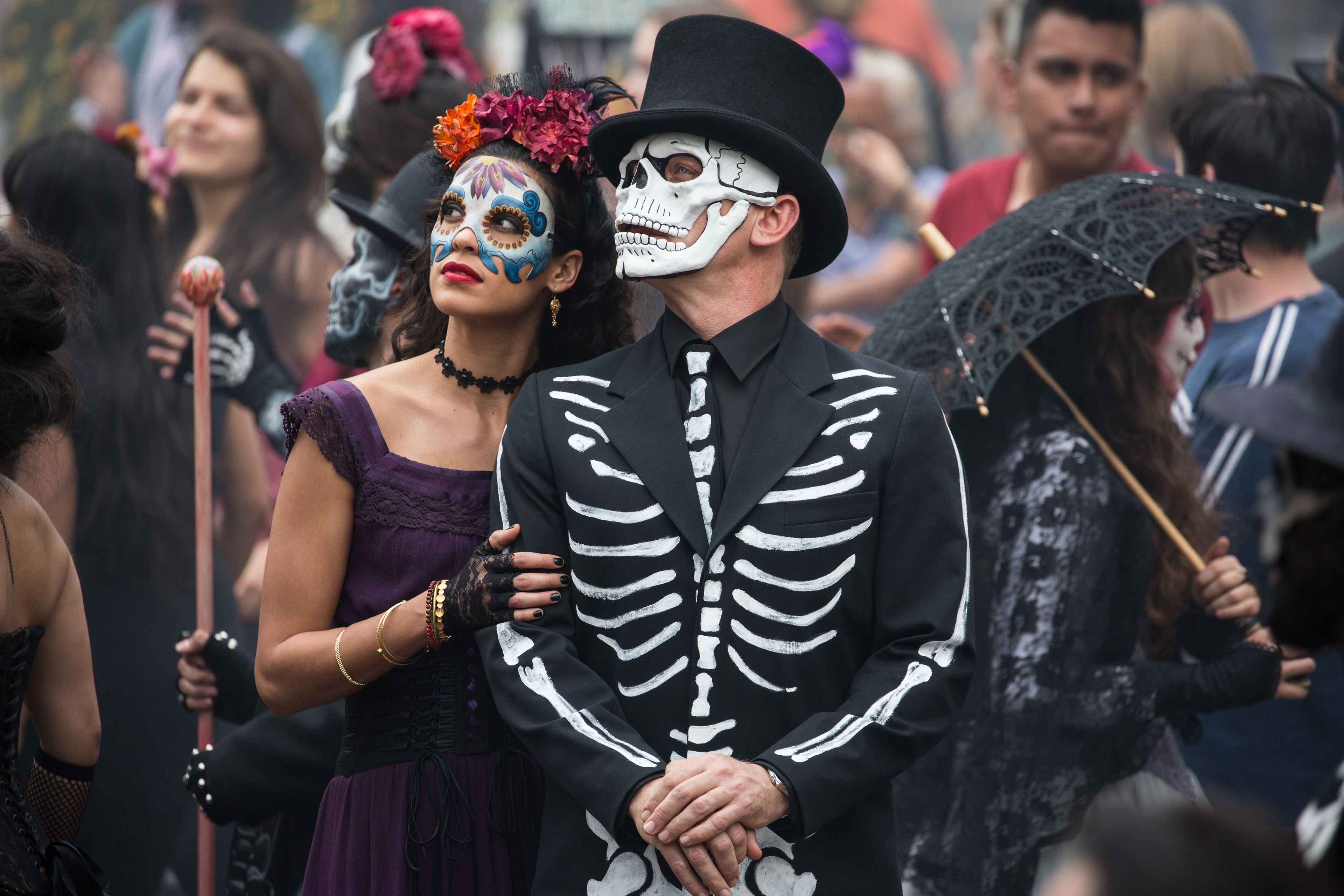 SMITH: That’s slightly over thinking it. I certainly avoid repetition, but not repetition of angles. I would much prefer to stay in an angle that’s engaging me than go for a more artistic angle that is a set-up that you’re just trying to work in. Again, you have to ask yourself, ” Why am I cutting?” It amazes me when people cut really vital dialogue and they don’t show the person saying it, because that’s 50% of the equation. If you play a line off, you’re diminishing that line and you’ve got to be really, really strict in the way you edit whether you play a line over or off (in other words over the person speaking or off to the reaction or something else), it’s not that I don’t ever do it. But I’m very careful about it because this line might be a turning point or a very important line and then you realize that the audience didn’t hear it. They didn’t see the person say it. It doesn’t register.
SMITH: That’s slightly over thinking it. I certainly avoid repetition, but not repetition of angles. I would much prefer to stay in an angle that’s engaging me than go for a more artistic angle that is a set-up that you’re just trying to work in. Again, you have to ask yourself, ” Why am I cutting?” It amazes me when people cut really vital dialogue and they don’t show the person saying it, because that’s 50% of the equation. If you play a line off, you’re diminishing that line and you’ve got to be really, really strict in the way you edit whether you play a line over or off (in other words over the person speaking or off to the reaction or something else), it’s not that I don’t ever do it. But I’m very careful about it because this line might be a turning point or a very important line and then you realize that the audience didn’t hear it. They didn’t see the person say it. It doesn’t register.
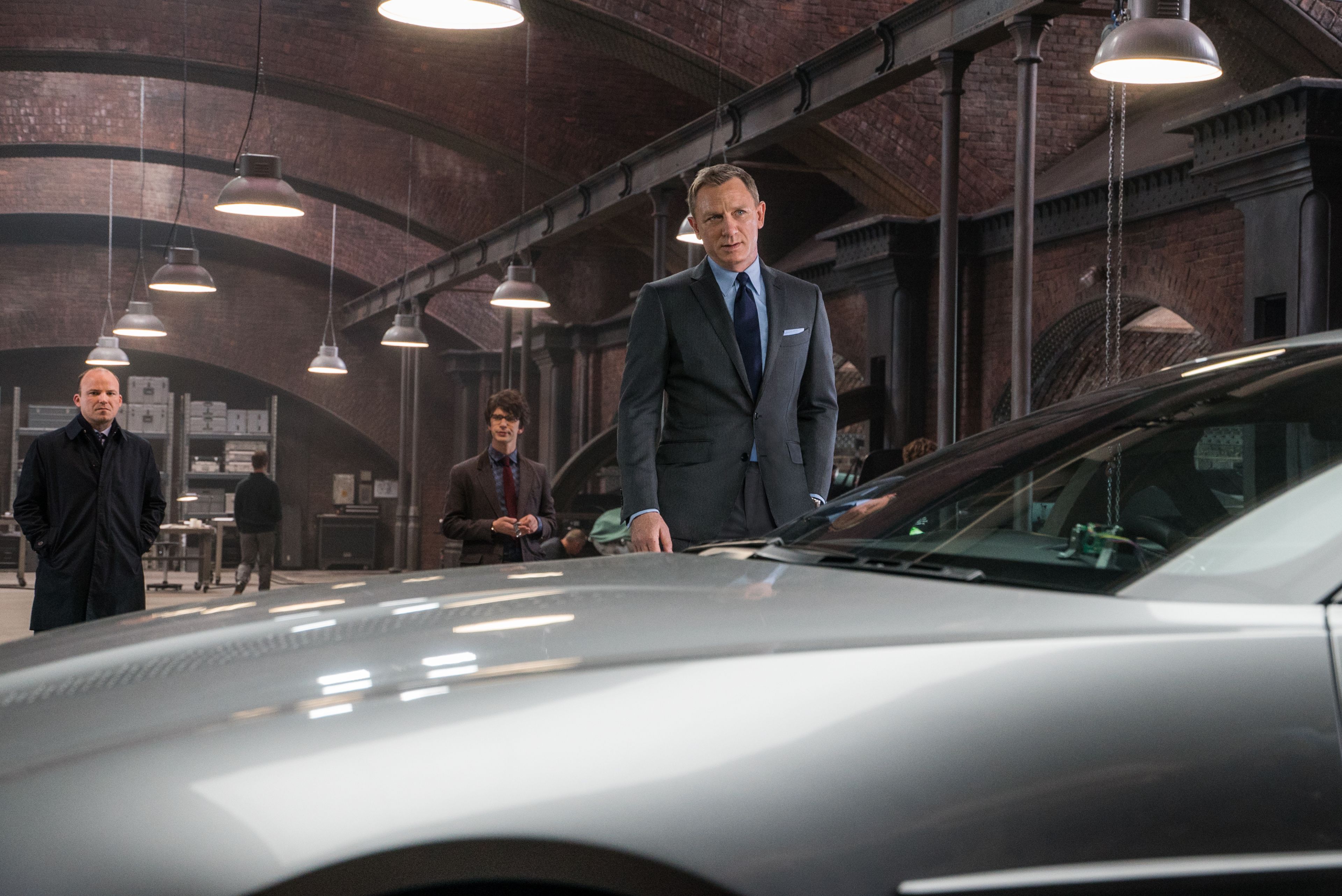 HULLFISH: I’ve definitely heard that in a past interview: If you want the audience to remember something, play it on the speaker.
HULLFISH: I’ve definitely heard that in a past interview: If you want the audience to remember something, play it on the speaker.
SMITH: Yeah, yeah. It doesn’t matter if that ruins the rhythm of your cut or ruins the fact that you can’t get where you want to go. Take the hit and stay with the reason that you’re looking at them. Maybe you’ve got a third character listening to a scene and you realize that you’ve gone to all this trouble to put this shot of that person listening, but not one moment in the scene do they require that shot. There’s nothing about that shot that’s moving the story forward and they’re not important enough to cut to. I’ve seen these cuts where the editor feels like they want to be inclusive and they want to join everyone into the fray, but you realize that they’ve put a very important piece of dialogue over a secondary character and it’s like, “Why?” If they’re not doing anything, don’t cut to them.
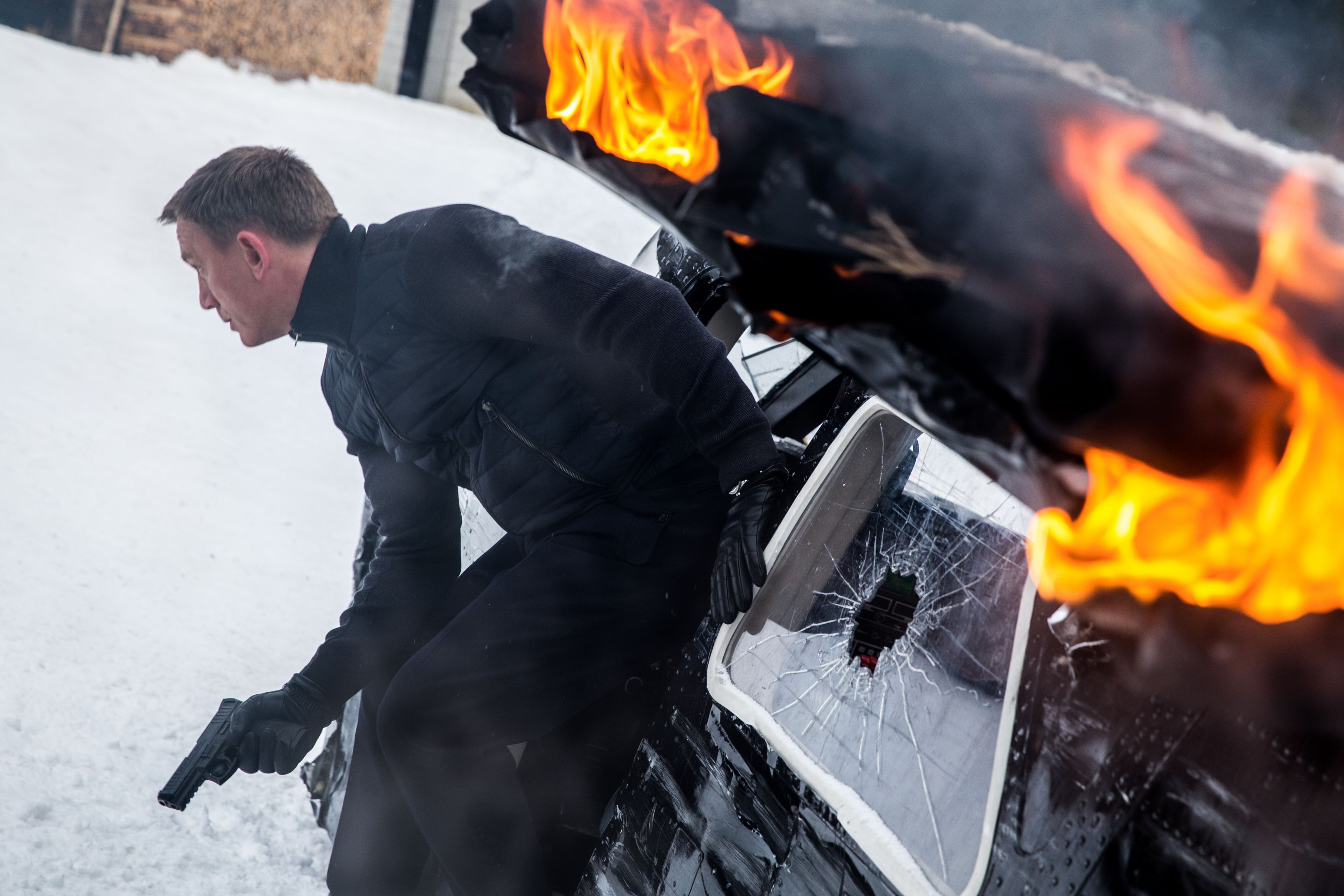 HULLFISH: Talk to me about “Spectre” or any other films you can talk about, what kind of storytelling structure stuff can you give an example of where you’ve done the assembly – which I’d assume is always in script order – and then you figure you need a major restructure of the story.
HULLFISH: Talk to me about “Spectre” or any other films you can talk about, what kind of storytelling structure stuff can you give an example of where you’ve done the assembly – which I’d assume is always in script order – and then you figure you need a major restructure of the story.
SMITH: Once you see that first run you quickly see where it lags and where it slows down. The other thing you might realize is that where something seemed very clear in the script, on film it’s no longer clear, the scene has come too far away from the event. It’s cause and effect. You’ve set something up, but you’ve waited 20 minutes to show it and in that 20 minutes or 10 minutes or 8 minutes or 4 minutes, you’ve kind of forgotten what it was that you were shown. You feel that. Then you’ve got the process of figuring out if maybe there’s a scene that’s a “floater.” Can we drag that scene out and put it somewhere else so we can get the cause closer to the effect? That is a lot of what you do is structurally move things around, whereas in script form it just wasn’t that noticeable, but in the flow of the film you realize that you’ve talked about a character or you’ve talked about an event, but you’ve waited too long and by the time you get into that scene you’re confused. Yet, it’s exactly as it should be, just too far apart or there’s too much complexity between the two thoughts. Then you go through the process of re-engineering and some films I’ve re-engineered massively, like the whole third act becomes the second act. Or the whole last part of the third act becomes the beginning. Films that you look at that are confusing and don’t work, you have to employ some fairly large thinking. It’s no time for little ideas. You’ve got to start thinking big and try big. Try something that was never in the script.
HULLFISH: Lee, can you walk us through your thoughts on cutting this sequence?
spectre-Spectre_EPK_DOM_Clip_PalazzoExit_h264_hd from Steve Hullfish on Vimeo.
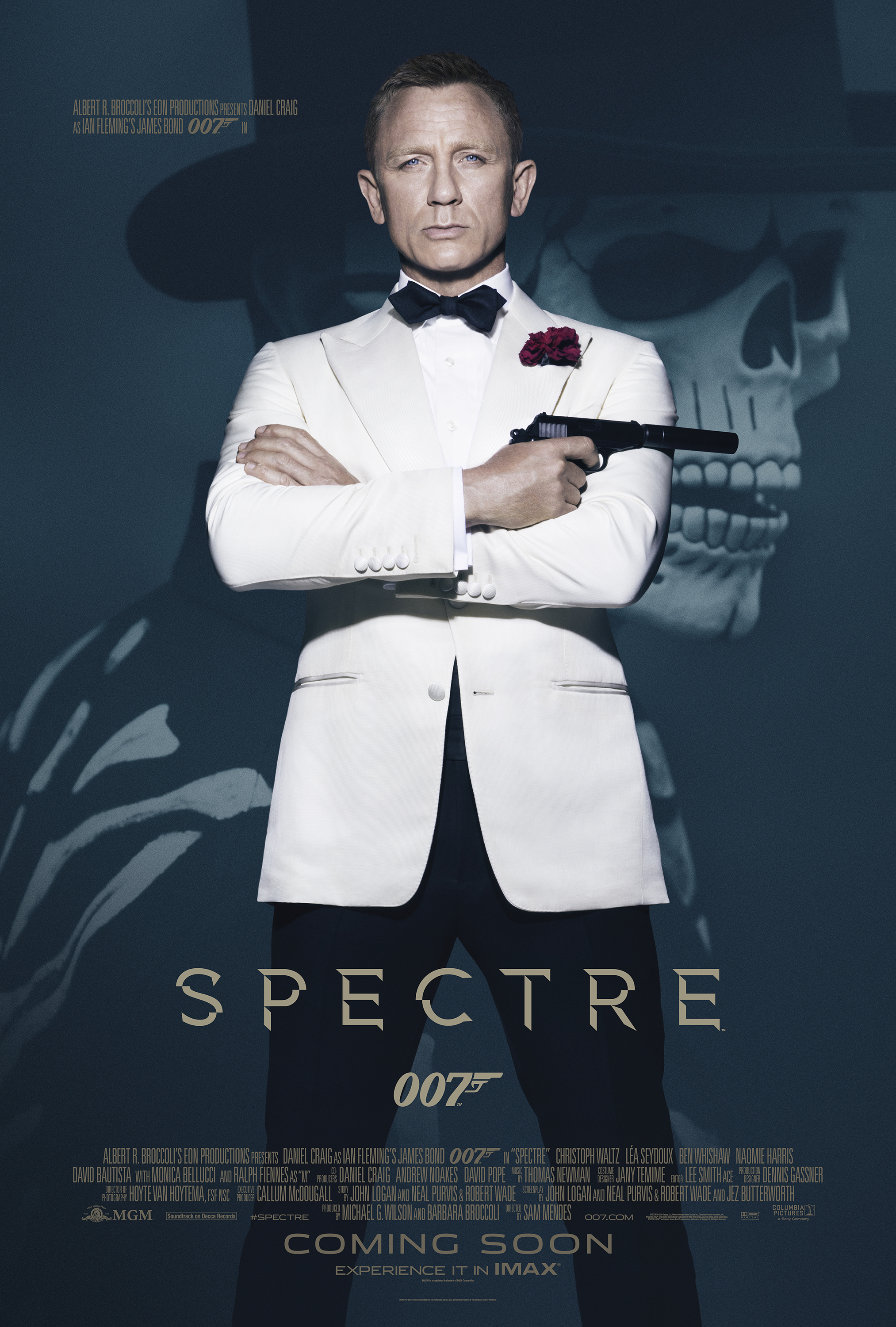 SMITH: That was a bit of fun to cut, having good shots of Bond and Mr Hinx in the c/u was a big help as most of these shots would be green screen it was nice that the Director insisted on having both cars rigged with stunt drivers sitting on rigs on top of both cars steering so the actors felt like they were really driving at very high speed which achieved the correct level of concentration in their performances, most of the shots in that scene were captured by main unit multiple cam angles for every shot added up to a lot of footage being used. I tried to not over cut the scene so as to make it look as realistic as possible , as with the rest of Spectre Sam wanted all the action to not look like a CGI set piece.
SMITH: That was a bit of fun to cut, having good shots of Bond and Mr Hinx in the c/u was a big help as most of these shots would be green screen it was nice that the Director insisted on having both cars rigged with stunt drivers sitting on rigs on top of both cars steering so the actors felt like they were really driving at very high speed which achieved the correct level of concentration in their performances, most of the shots in that scene were captured by main unit multiple cam angles for every shot added up to a lot of footage being used. I tried to not over cut the scene so as to make it look as realistic as possible , as with the rest of Spectre Sam wanted all the action to not look like a CGI set piece.
HULLFISH: Thank you so much for sharing your thoughts on the art and craft of editing with us. It was a fascinating look into your process.
SMITH:
Thanks is was a pleasure talking with you!
If you are interested in reading the other two dozen interviews in this series, use THIS LINK. For updates on future interviews and my take on the world of post-production, follow me on Twitter @stevehullfish

Filmtools
Filmmakers go-to destination for pre-production, production & post production equipment!
Shop Now